Kathakali Dance Of Which State ?
Kathakali is a famous Indian classical dance form from Kerala. Kathakali means to present
Hand Gesture (Mudra)
The dictionary has many meanings of gesture, but this word holds special significance in the view of classical dance.
In Indian dances, in the modern age, mudra is called the gesture of hands. The word Mudra is derived from the Sanskrit verb “mud” which literally means pleasure. The words amod, pramod, etc. are also derived from this verb. The word mudra is formed by adding the suffix “ra” to it, meaning “to give”. Kathak Dance From Which State
The meaning in the scriptures is defined as the following - a hand gesture is the formation of our hands which pleases the gods and the worshiper is free from all enmity, anger, and other vices.
In ancient Indian dance scriptures, these hand gestures have also been referred to as “Hasta-abhinaya” (hasta + abhinaya). The ancient scriptures of Bharata's Natyashastra, Abhinaya Darpan, etc. have described “Hasta-abhinaya” in detail.
Various forms of dance that have independent scriptures have elaborated on this topic keeping Bharatmuni’s knowledge as the base. In all these texts, hand gestures are considered to have the same importance as the alphabet in the language of dance. Online Kathak Dance Classes
Bharata Muni has divided hand gestures into three categories: asamyukta, samyukta, and nritta hasta. The gestures made with one hand is known as asamyukta hasta, whereas gestures made with the support of both hands is known as samyukta hasta. The hand gestures used in dance are called nritta hasta.
According to Bharata's Natyashastra, the total number of hand gestures is 64, out of which 24 are asamukyta, 13 are samyukta, and 27 are nritta hasta, while according to Abhinaya Darpan, there are 32 asamyukta hasta and 23 samyukta hasta with a total of 55 hand gestures. In this book, the nritta hasta is not separately recognized.
The various hand-gestures described in Acharya Nandikeshwar's Abhinaya Darpan are as follows:
Asamyukta Hasta(Single Hand Gestures)
1. Pataka: This hand gesture is formed by keeping all fingers straight and together, and bending a thumb so that it touches the end of the index finger. It is used to show clouds, wind, door closing, etc.
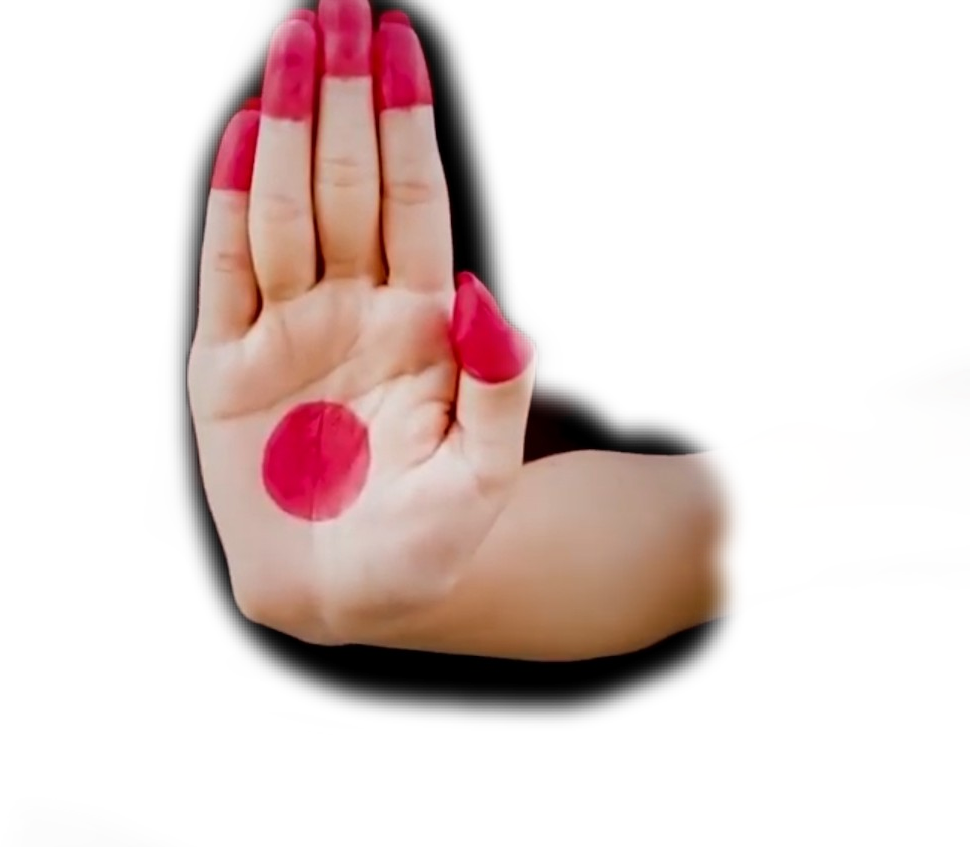
2. Tripataka: In Pataka, when the ring finger is bent, it is known as Tripataka. It is used to show the crown, or tree, etc.
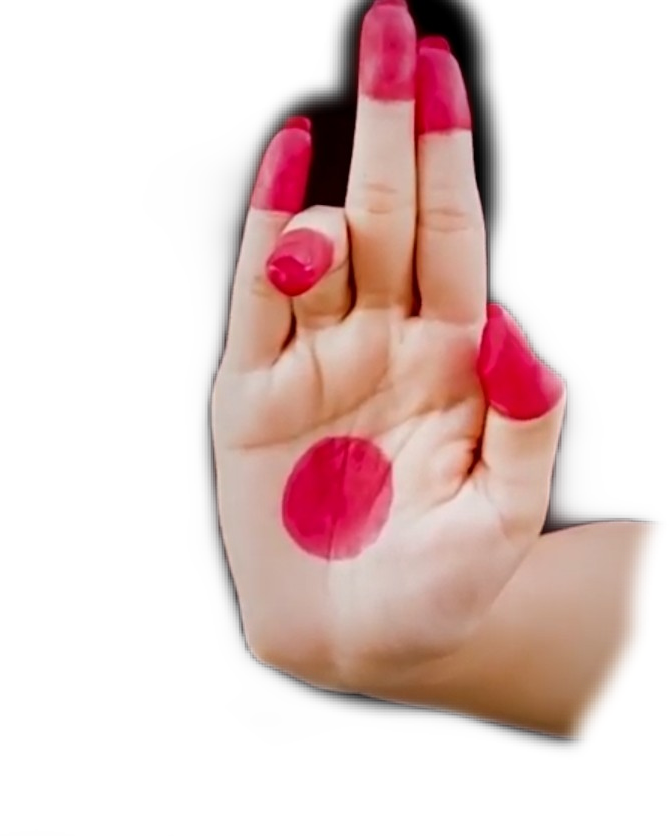
3. Ardhpataka: In Tripataka hasta, when the little finger is bent, it becomes Ardhpataka. It is used to donate leaves, flag, etc.
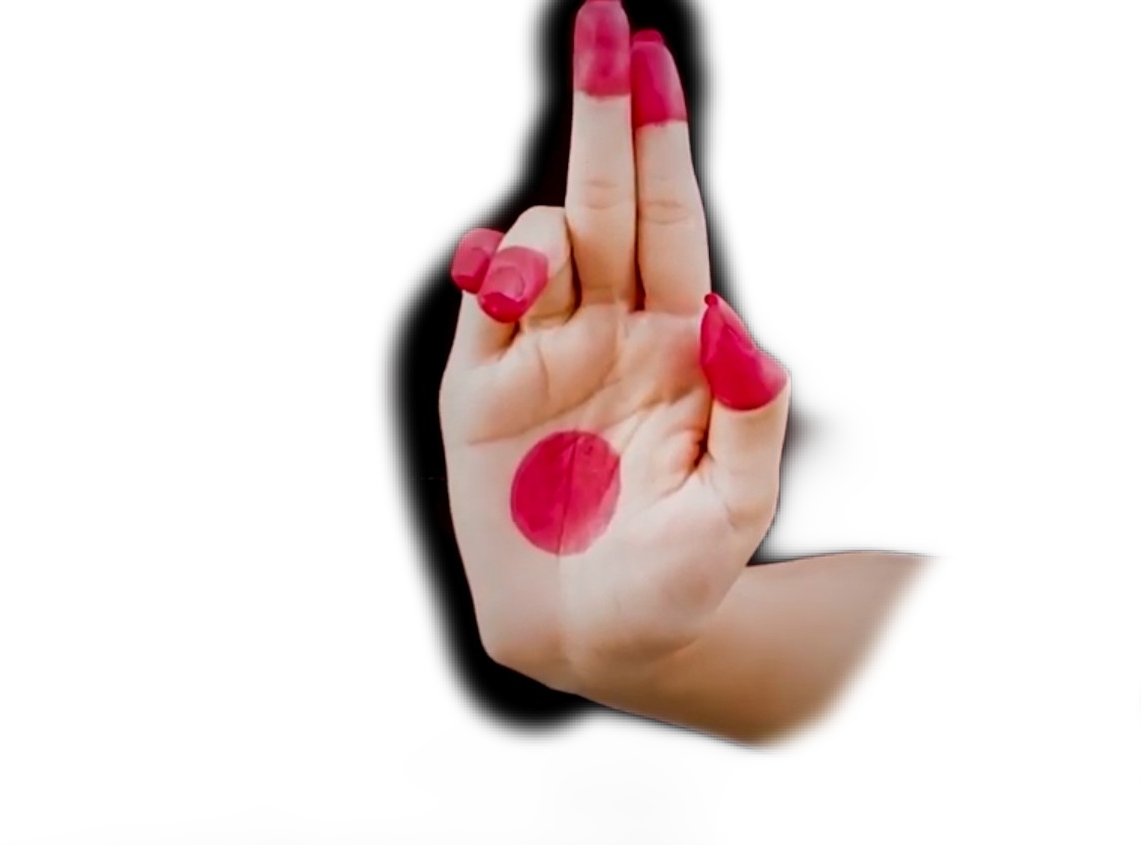
4. Kartarimukh: In Ardhpataka, when the index finger and little finger are spread, it becomes Kartarimukh. It is used to indicate men and women, the corner of the eye, separation, etc.
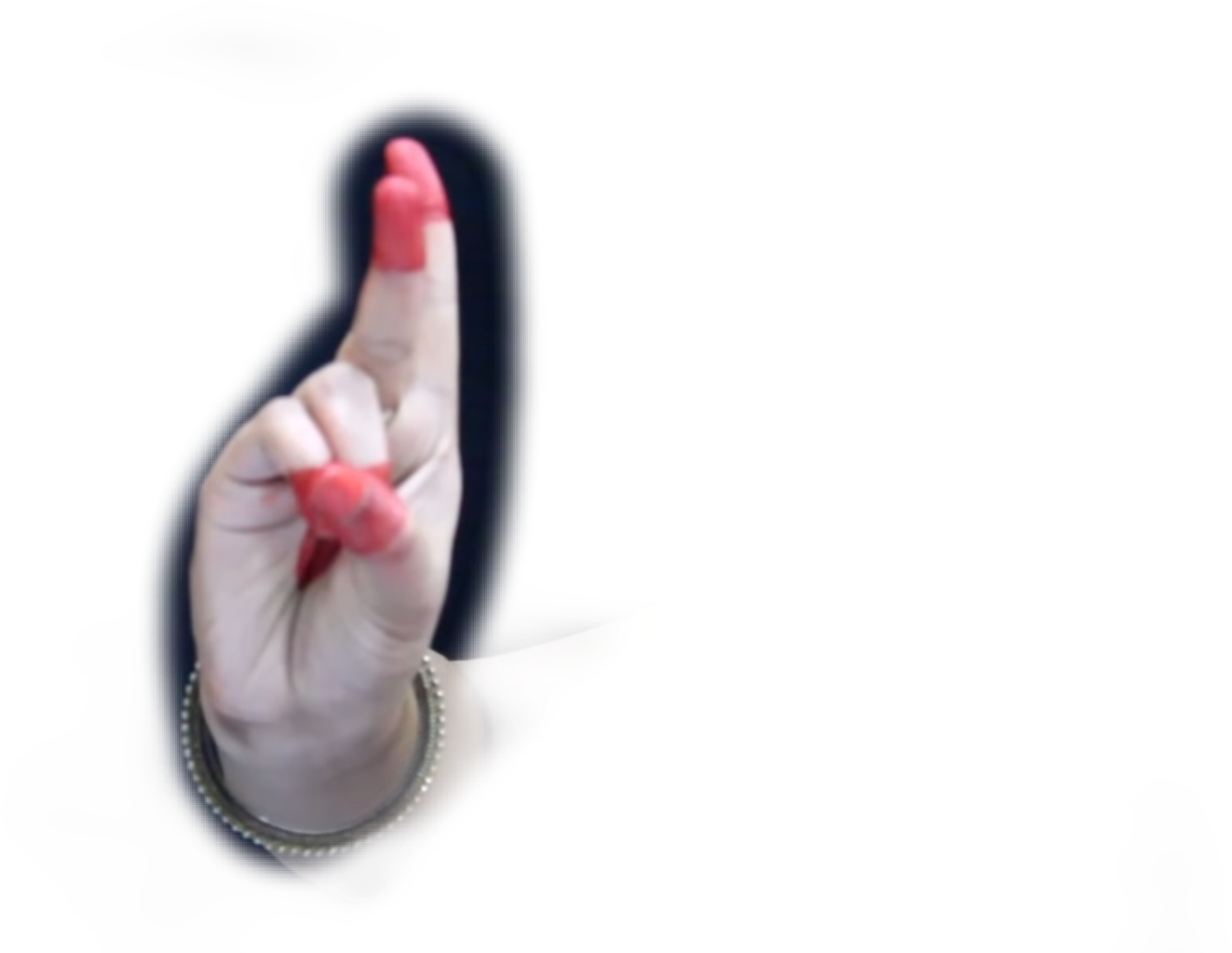
5. Mayur: In Kartarimukh Hasta, when the ring finger and thumb are joined, and the little finger is raised, then it is known as Mayur. It is used to denote a peacock, creeper, braid, etc.
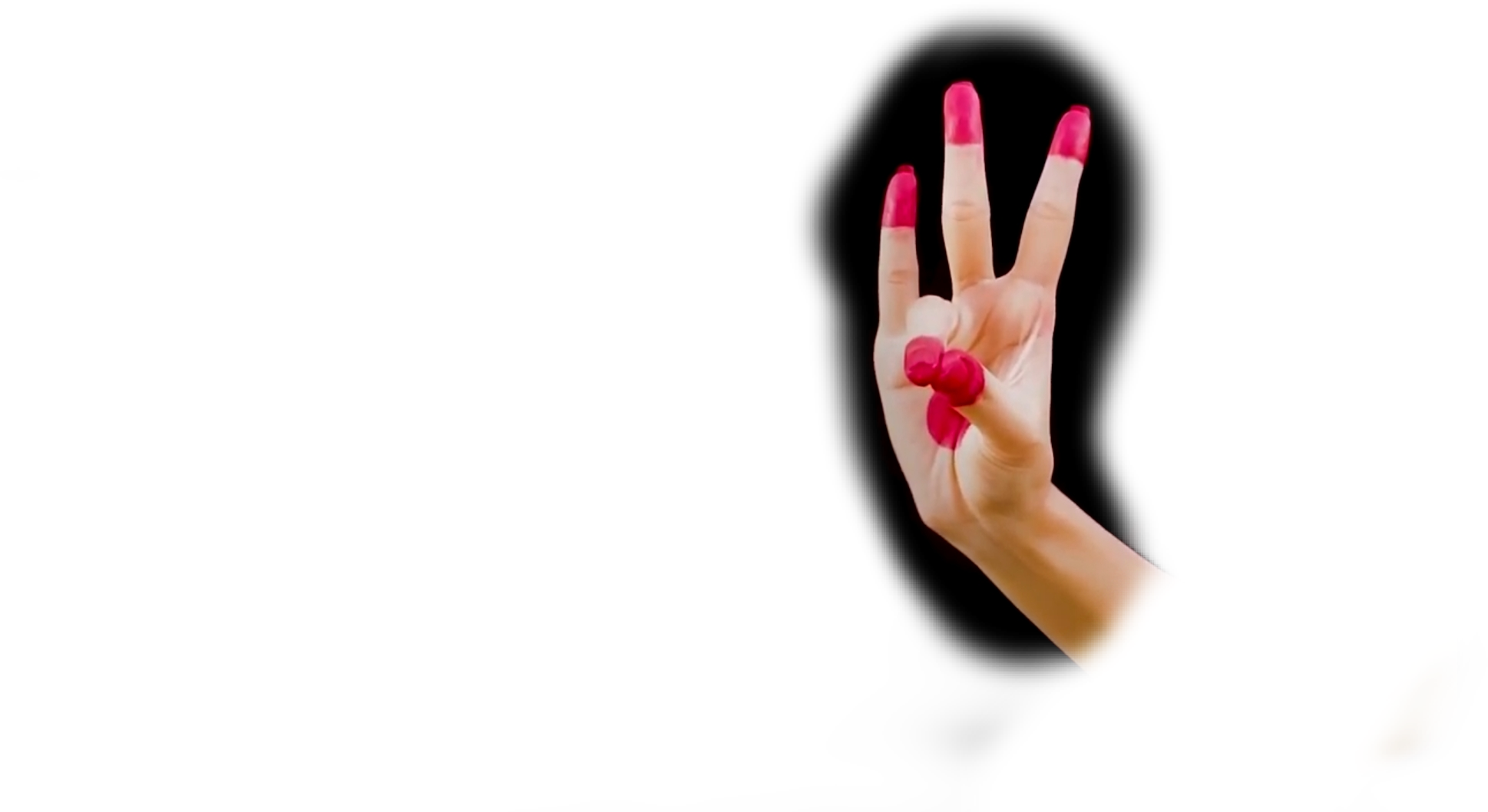
6. Ardhchandra: In Pataka, when the thumb is stretched outward whilst separating it from other fingers, it is known as Ardhchandra. It is used to denote the moon on Janmashtami, holding someone’s neck, prayer, etc.
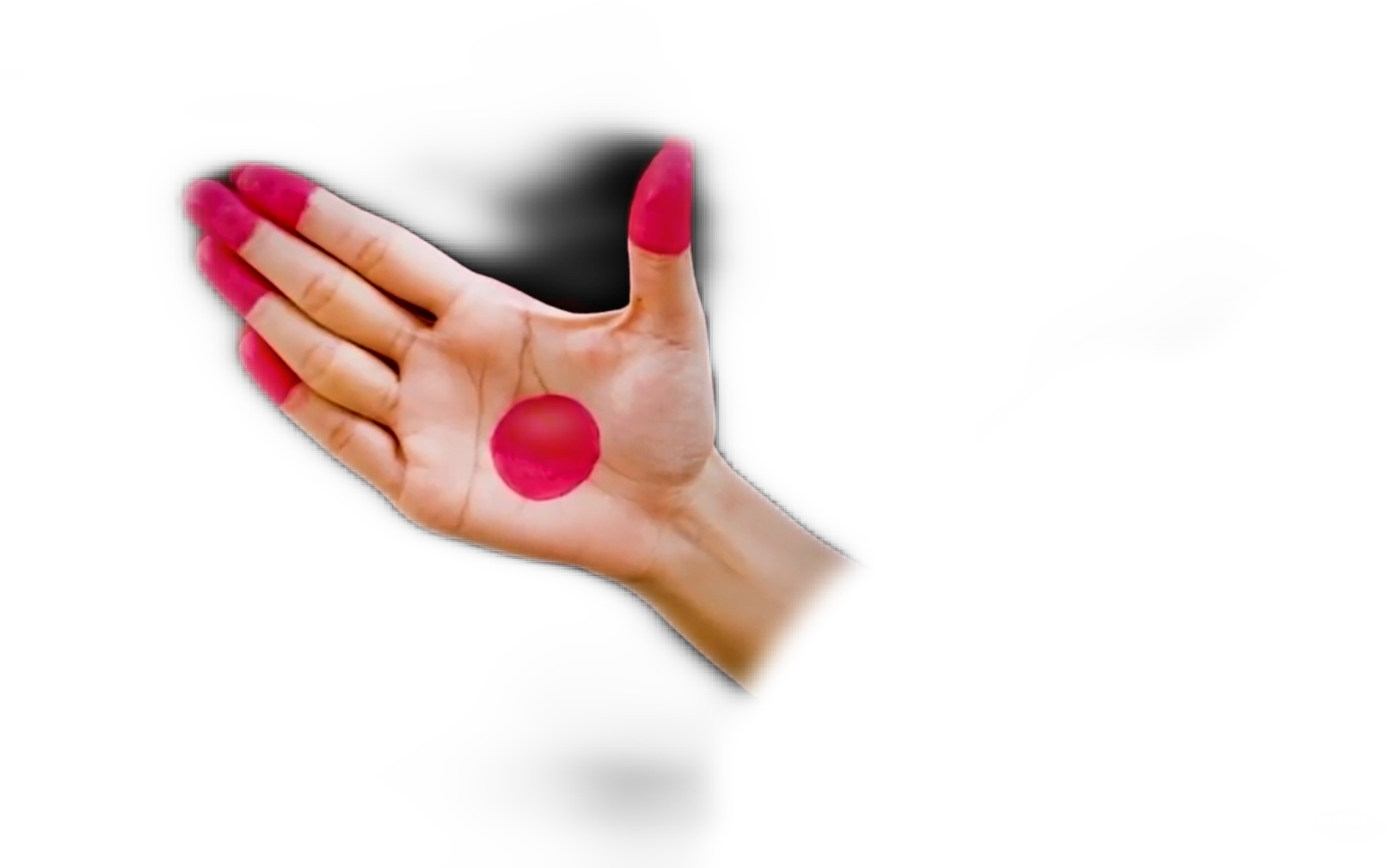
7. Aral: In Pataka, when the index finger is bent, it is known as Aral hasta. It is used to denote poison, honeydew, etc.
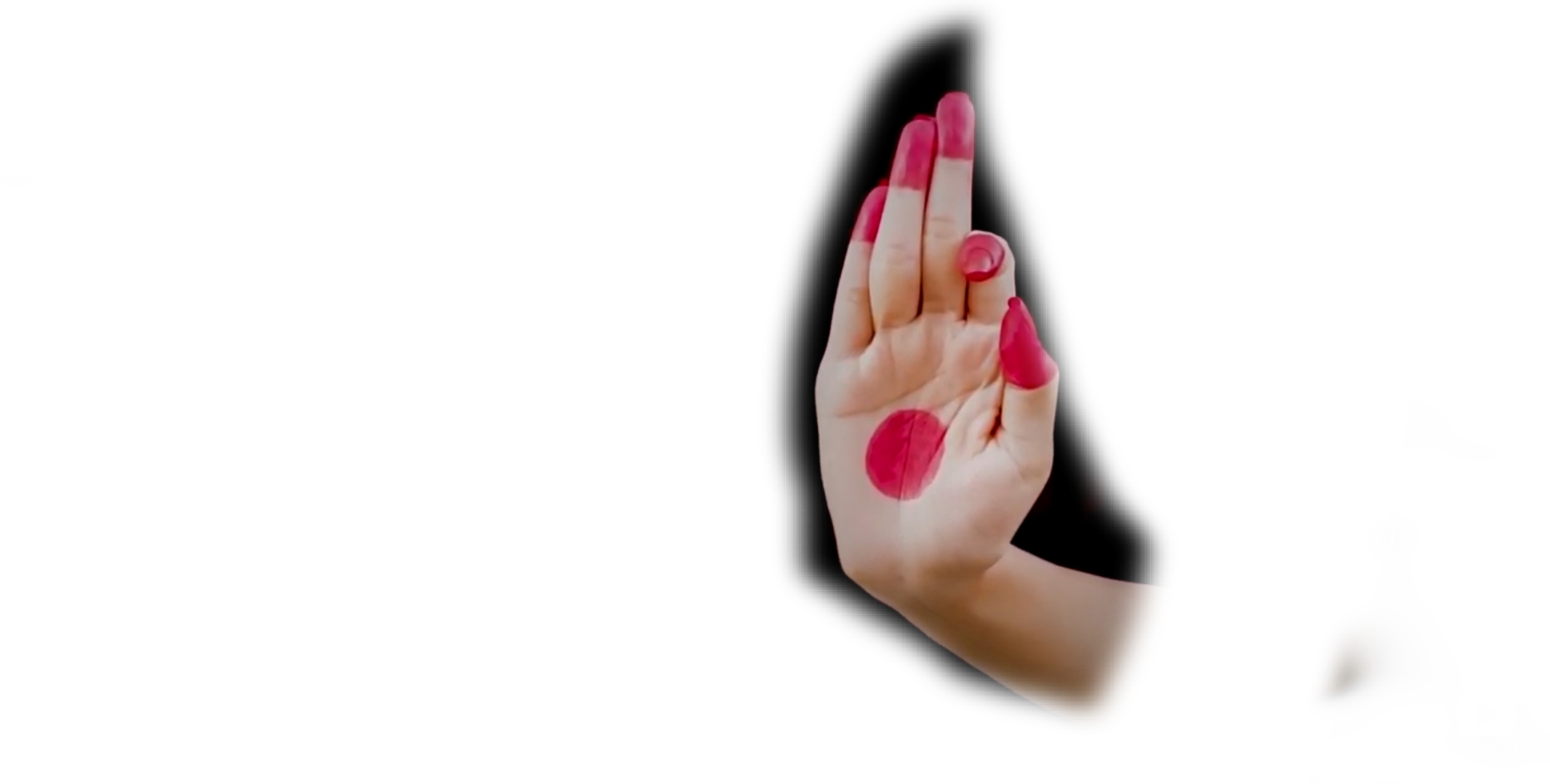
8. Shuktund: In Aral, when the ring finger is bent, it is known as Shuktund hasta. It is used to denote flood, wound, shock, etc.
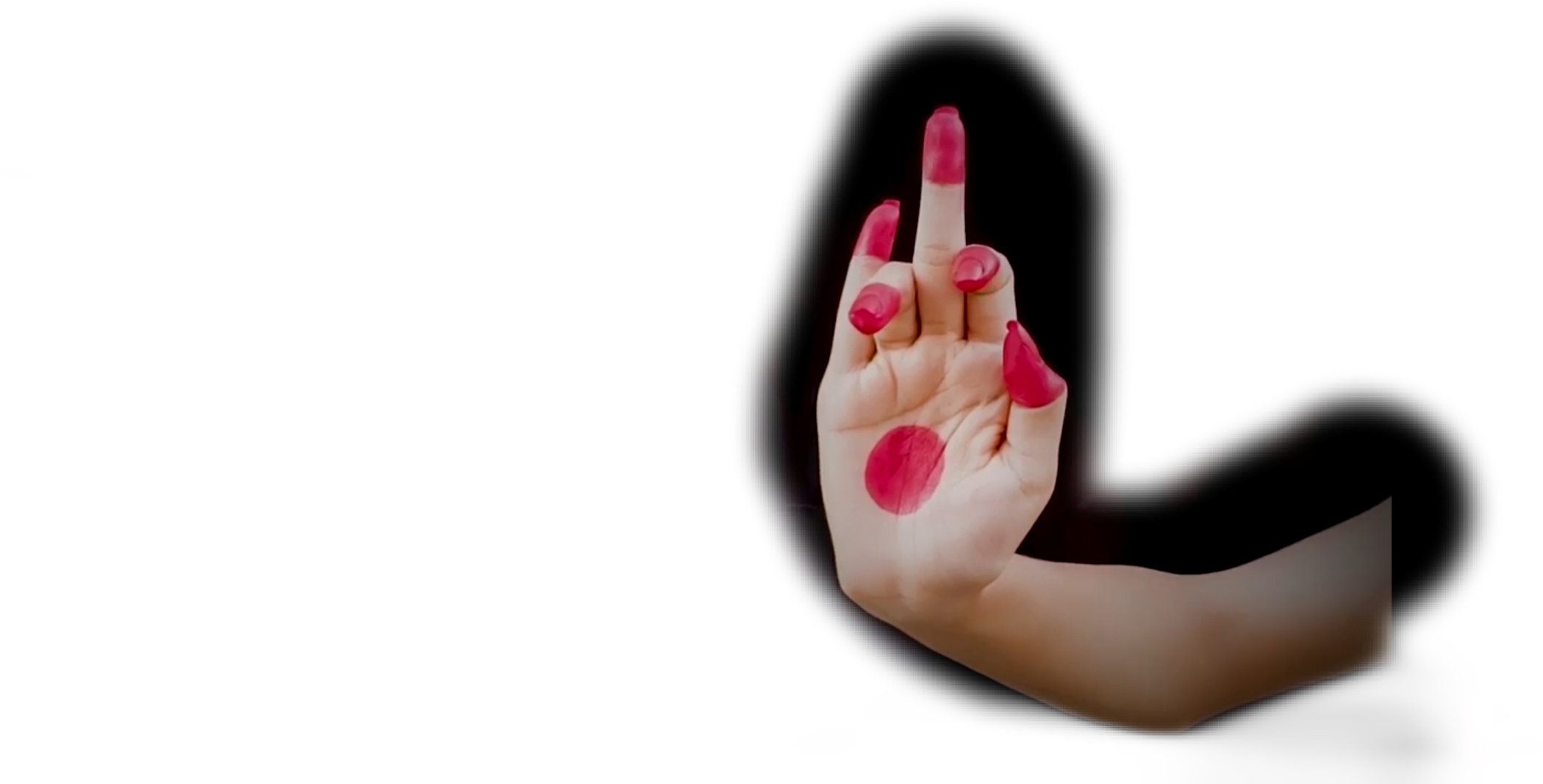
9. Mushti: When all four fingers are joined to form a fist and the thumb is placed on top, it is known as Mushti. It is used to denote firmness, etc.
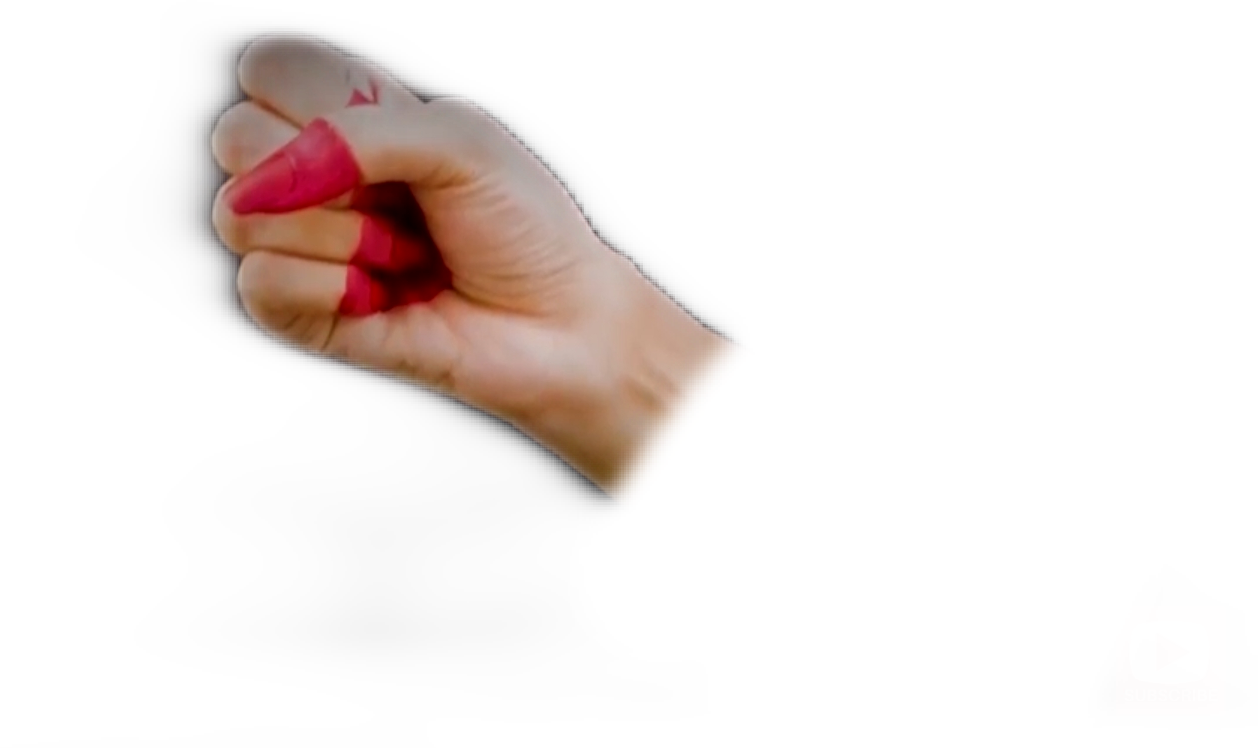
10. Shikhar: In Mushti, when the thumb is raised upwards, it is known as Shikhar. It is used to denote Kamdeva, bow, determination, etc.
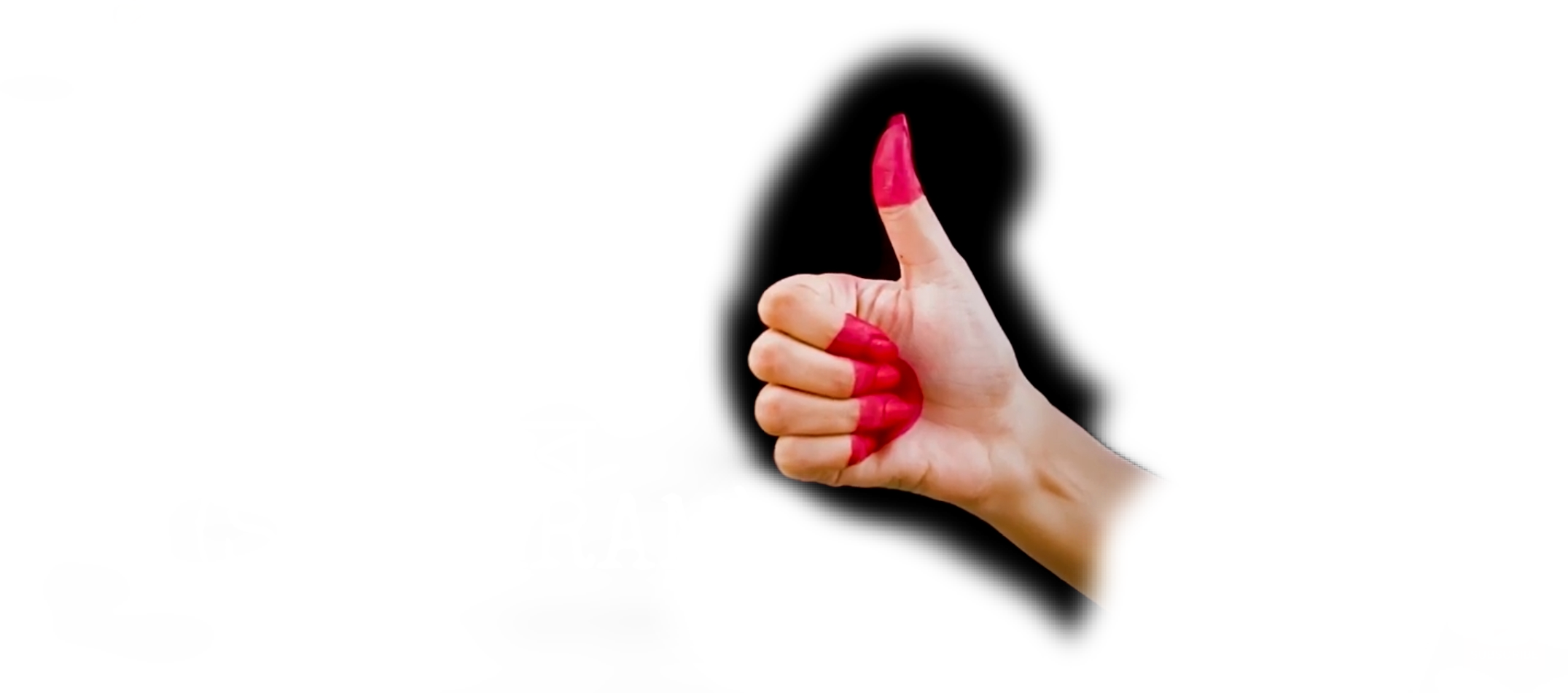
11. Kapitth: In Shikhar hasta, when the first finger is bent and joined with the thumb on top, it is known as Kapitth. It is used to show Lakshmi, Saraswati, holding the aanchal (dupatta) etc.
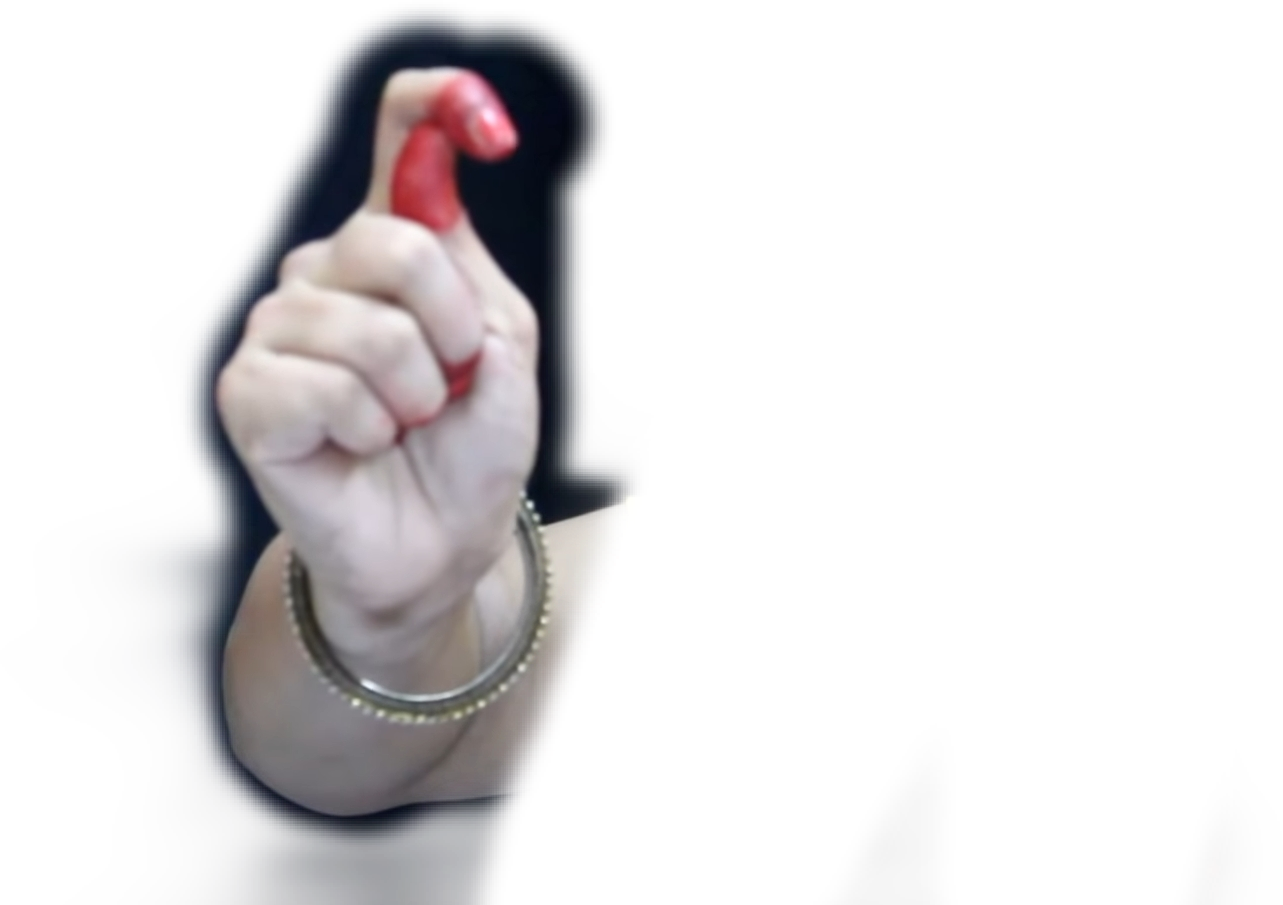
12. Katkamukh: In Kapitth, when the middle finger is placed alongside the index finger, it is known as Katkamukh. It is used to denote plucking flowers, a necklace, garland, etc.
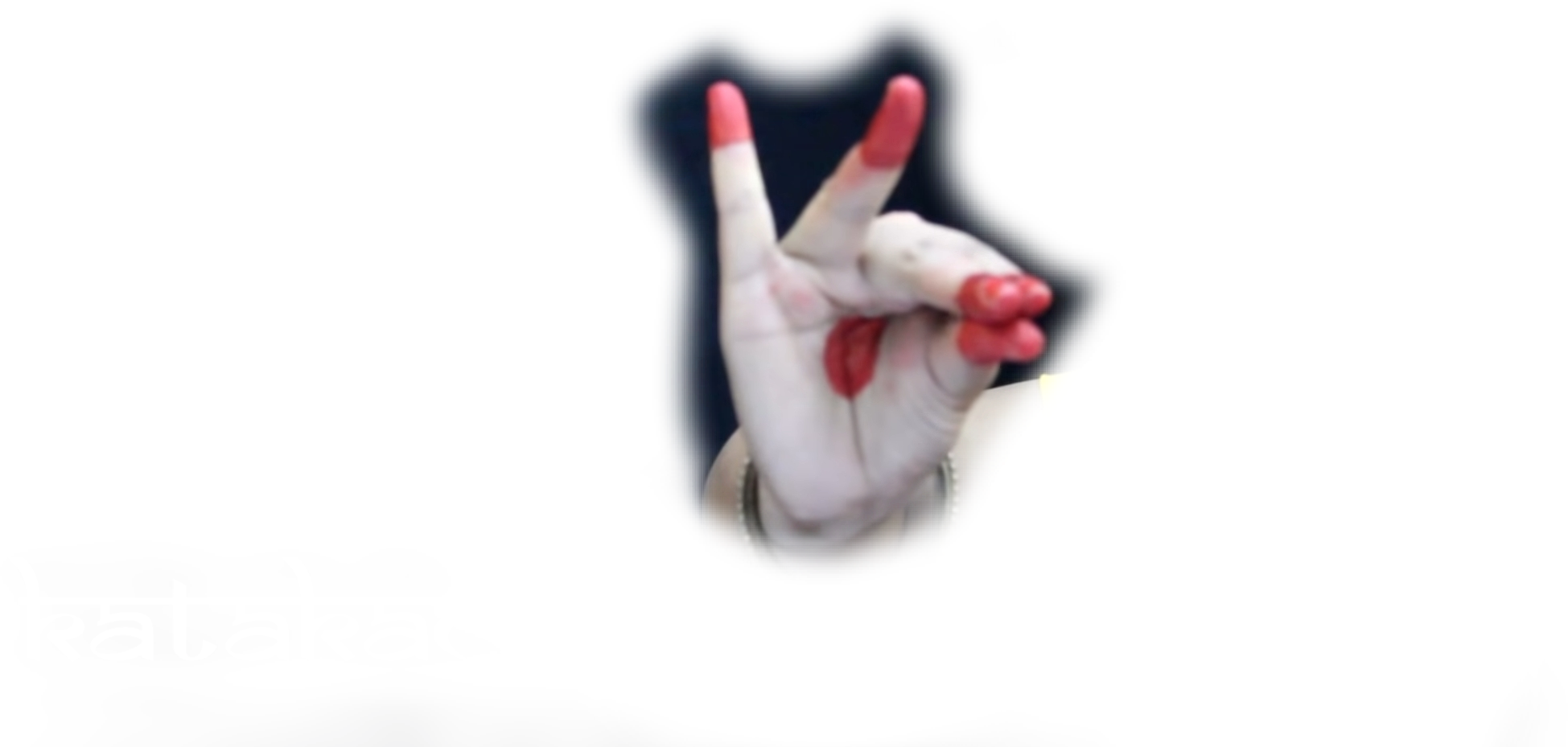
13. Soochi: In Katkamukh hasta, when the index finger is raised upright, it is known as Soochi. It is used to denote one God, the world, refusal, fact/statement, etc.
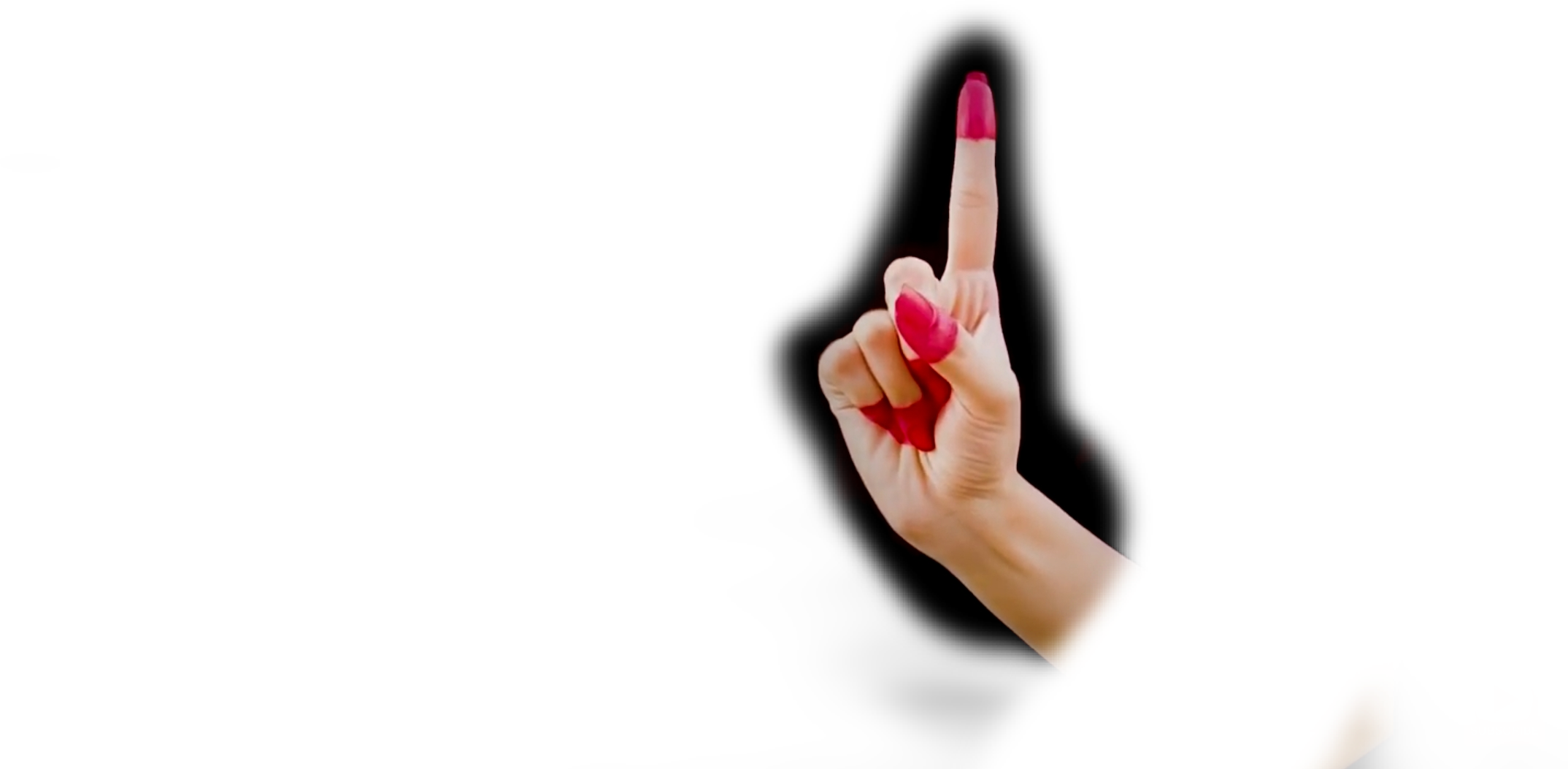
14. Chandrakala: In Soochi, when the thumb is stretched outward and separated from other fingers, it is known as Chandrakala. It is used to denote a crescent, Lord Shiva’s moon on the head, etc.
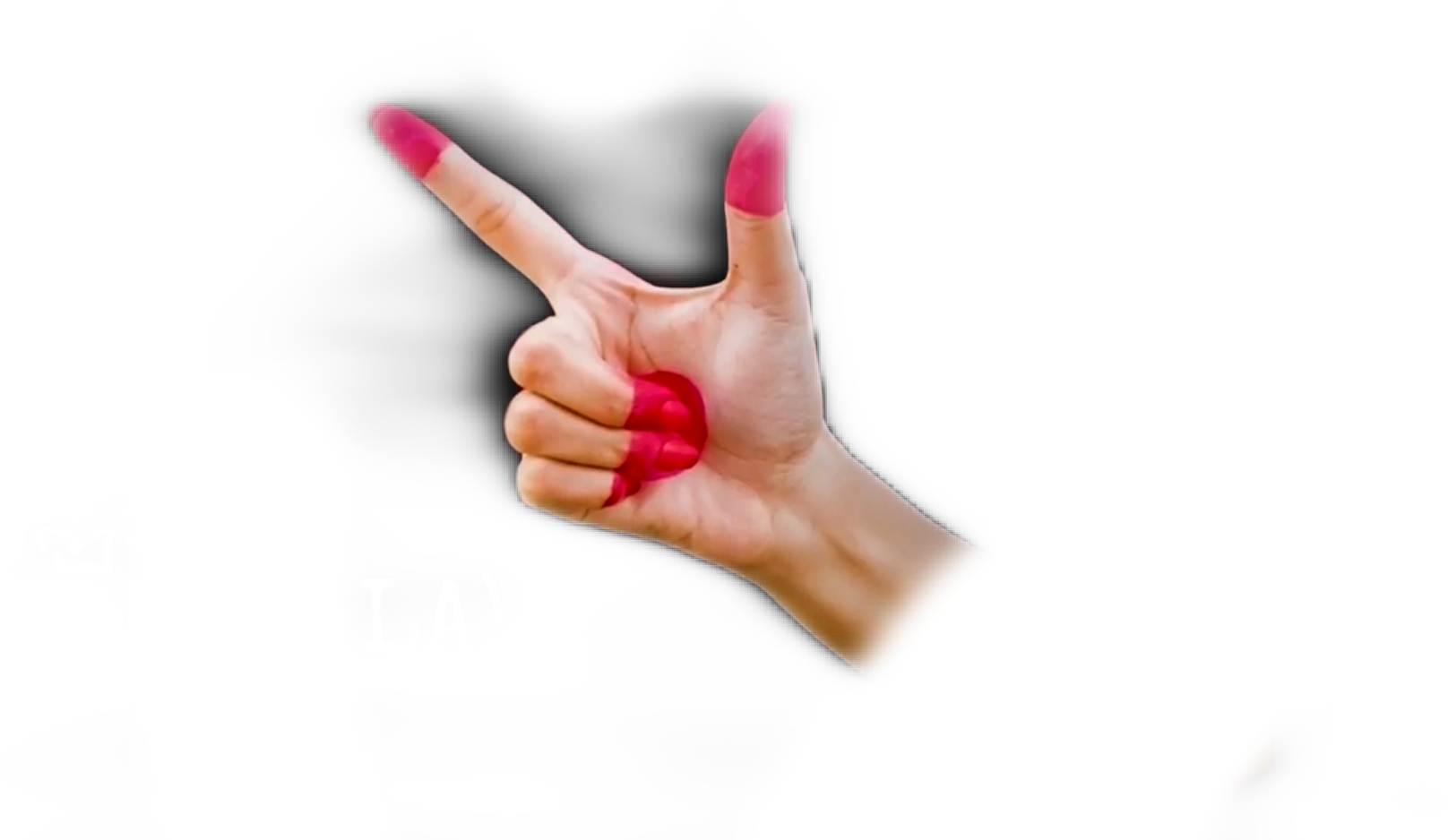
15. Padmakosh: When all the fingers are spread slightly whilst remaining inwards is known as Padmakosh. It is used to denote fruit, ball, bud, etc.
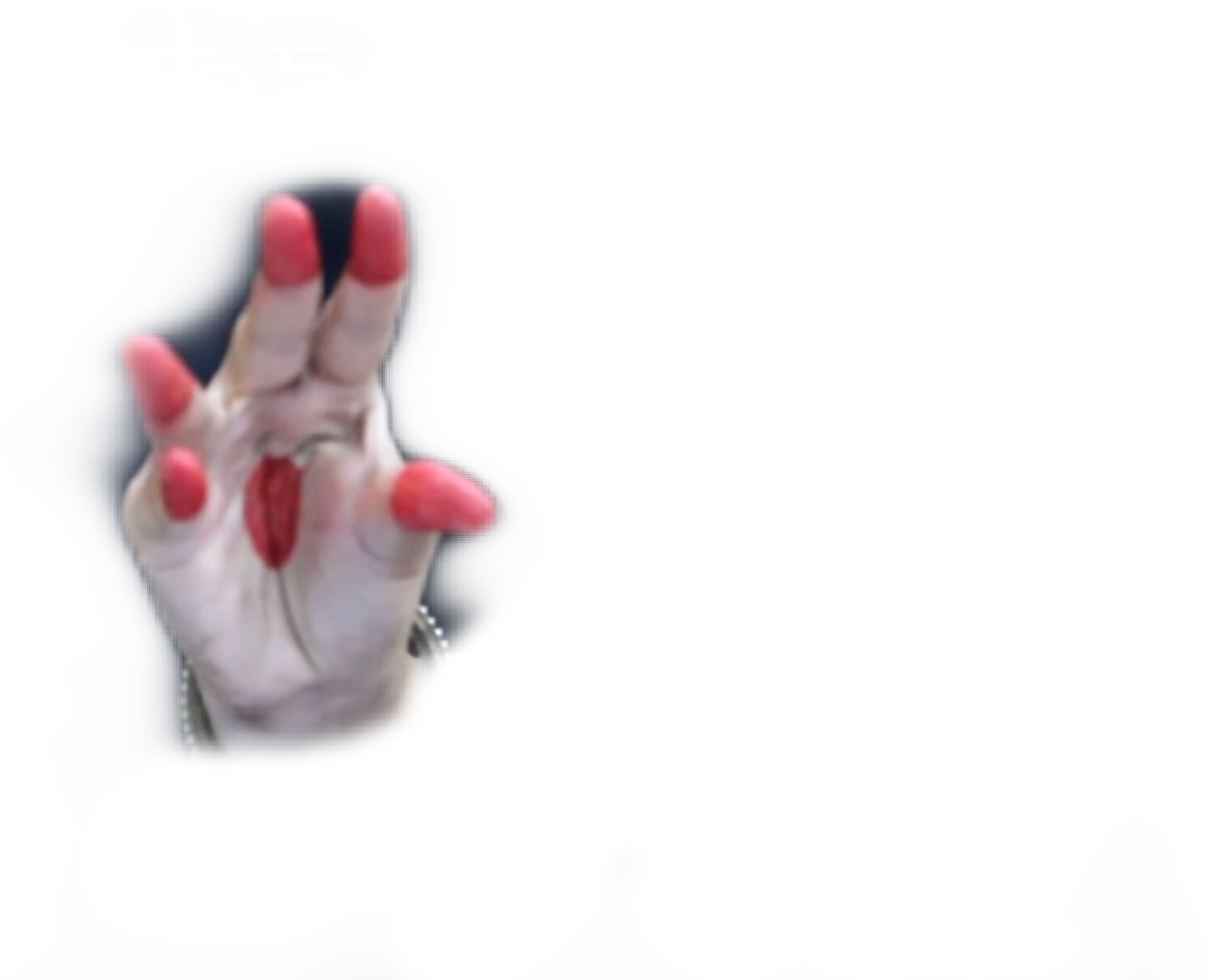
16. Sarpsheesh: In Pataka, when the fingers are bent slightly, it becomes a Sarpsheesh mudra. It is used to denote a snake, a low-frequency sound, the burning of Gods and saints, etc.
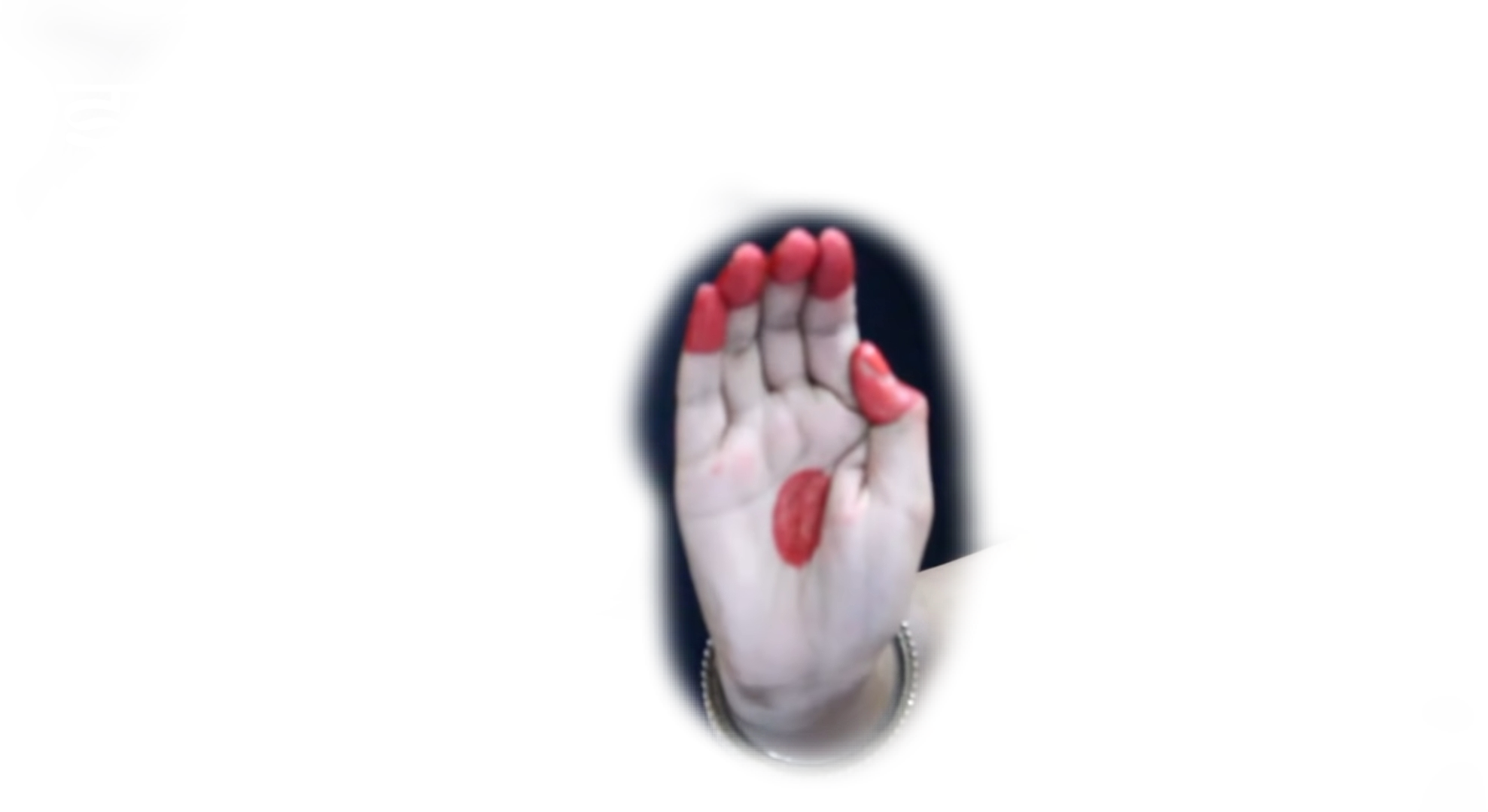
17. Mrigasheesh: In Sarpsheesh, when the little finger and thumb is stretched upright, it becomes Mrigasheesh. It is used to denote clothes, massaging of feet, calling the lover, etc.
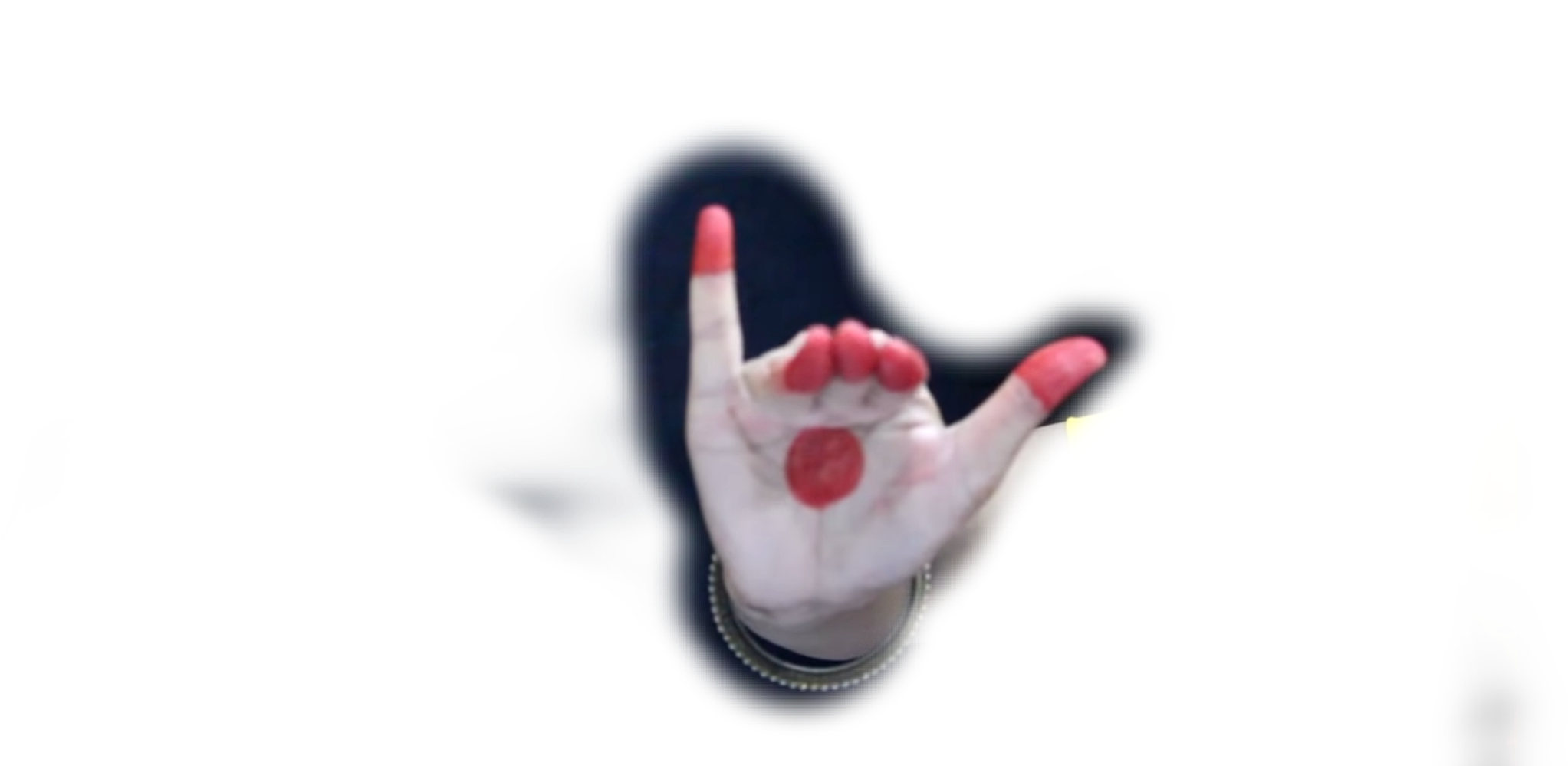
18. Sinhamukh: When the middle and ring finger are joined together with the thumb, whilst spreading the other two fingers, it becomes Sinhamukh. It is used to denote rabbit, medicines prepared by old-age doctors, etc.
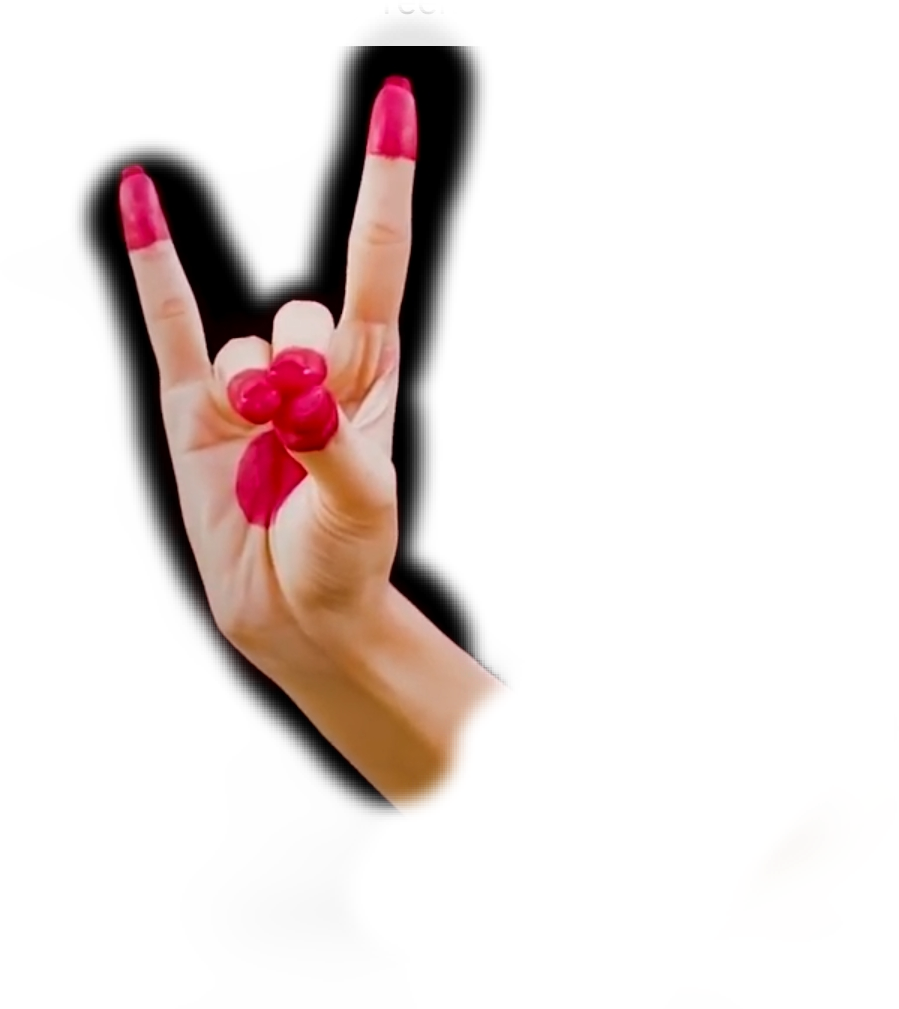
19. Kangul: In Padmakosh, when the ring finger is bent completely inwards, it is known as Kangul. It is used to denote monkey fruit, small bangles, coconut, etc.
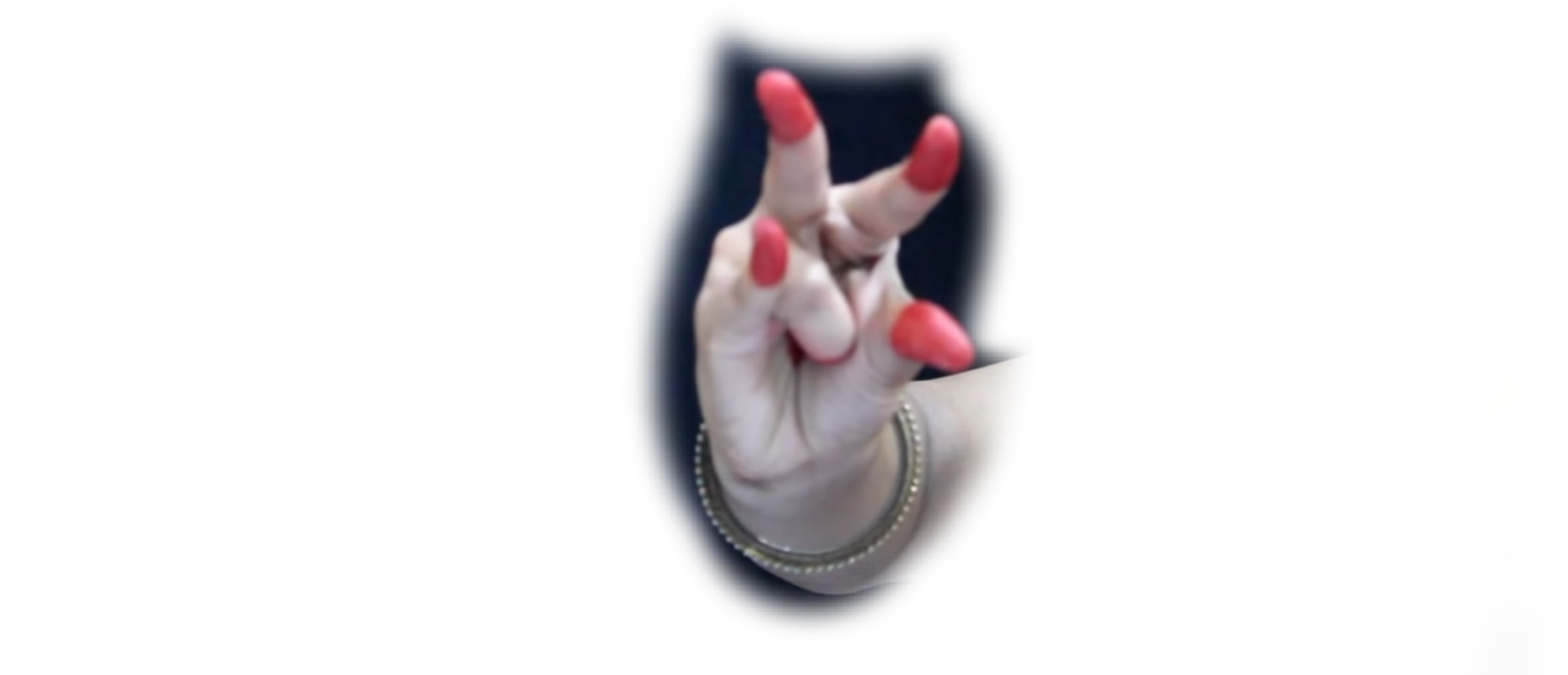
20. Alpadma: On spreading all fingers yet ending them slightly is the formation of Alpadma. It is used to denote a full-grown flower, asking “why”, etc.
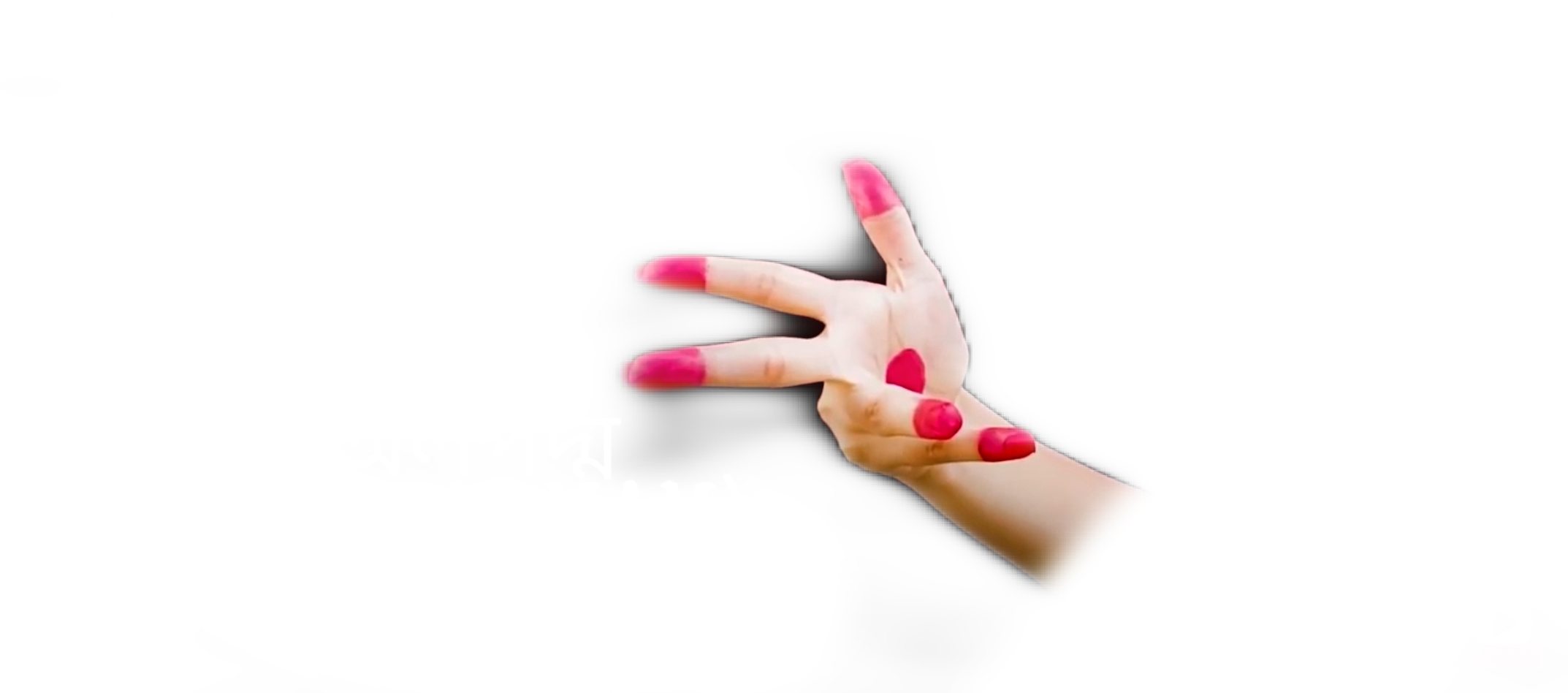
21. Chatur: On stretching the little finger straight and making the thumb touch the bottom-most part of the ring finger is the formation of Chatur hasta mudra. It is used to denote a little but of Kasturi, proof, etc.
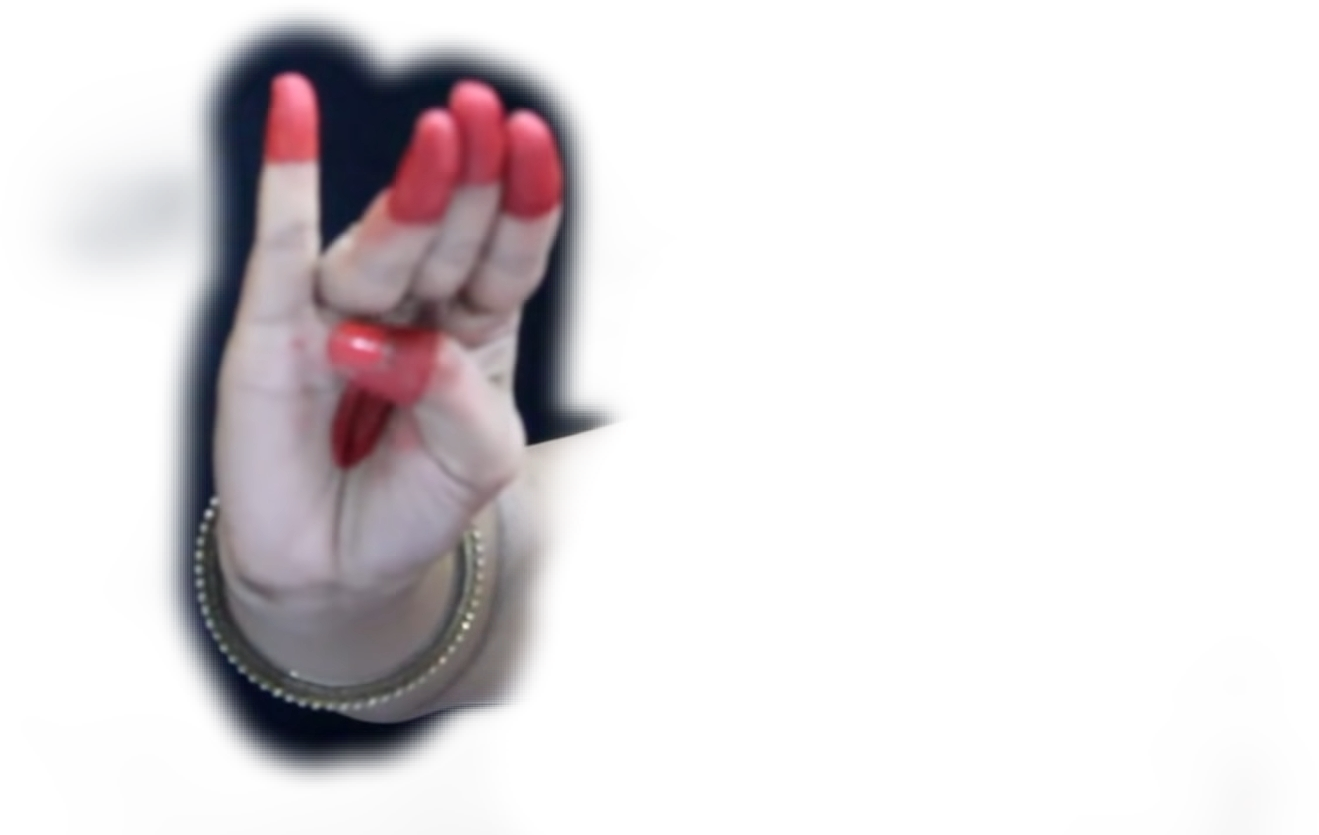
22. Bhramara: By folding the index finger completely and making the middle finger and thumb touch whilst spreading the ring and little finger, the Bharamara mudra is made. It is used to denote bee, parrot, etc.
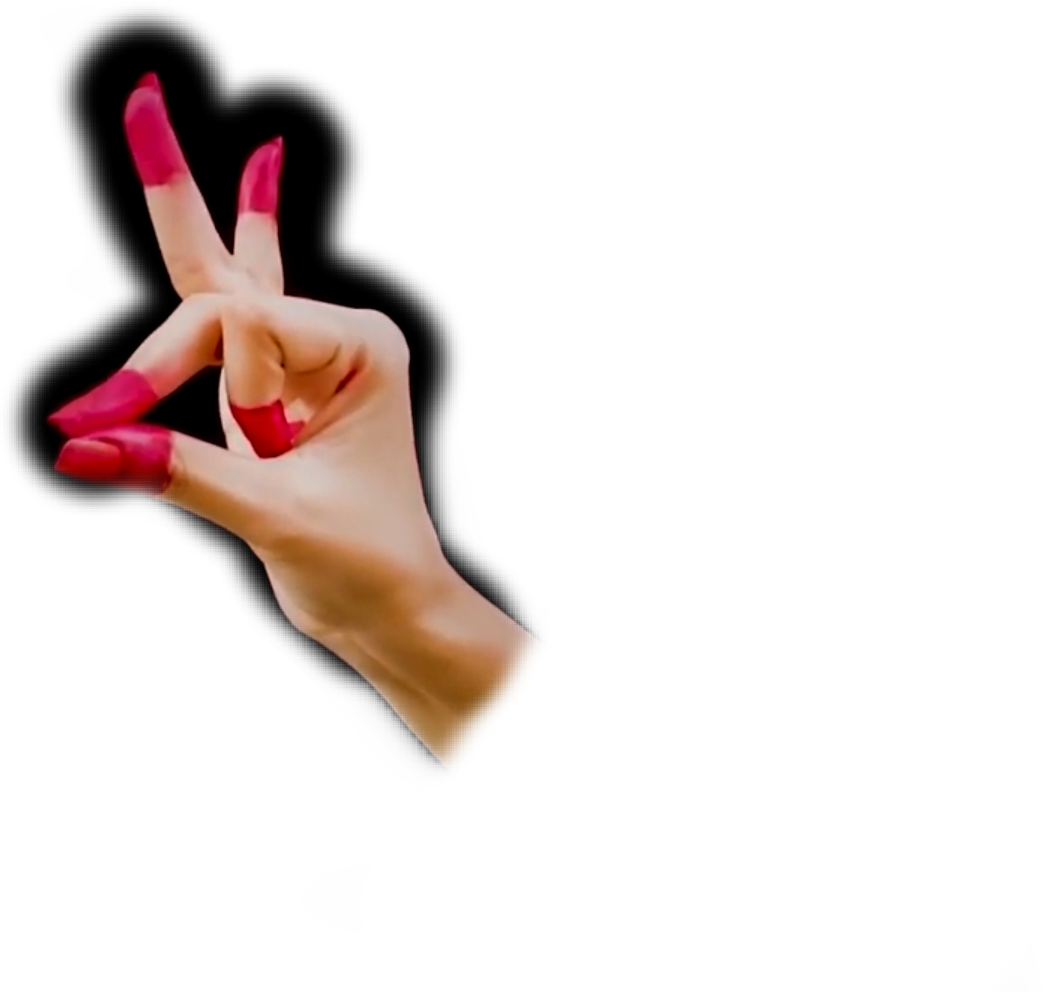
23. Hansaasya: In Aral hasta, when the index finger is placed on the thumb, it becomes Hansaasya. It is used to denote the light of candles, tying of thread, notice, etc.
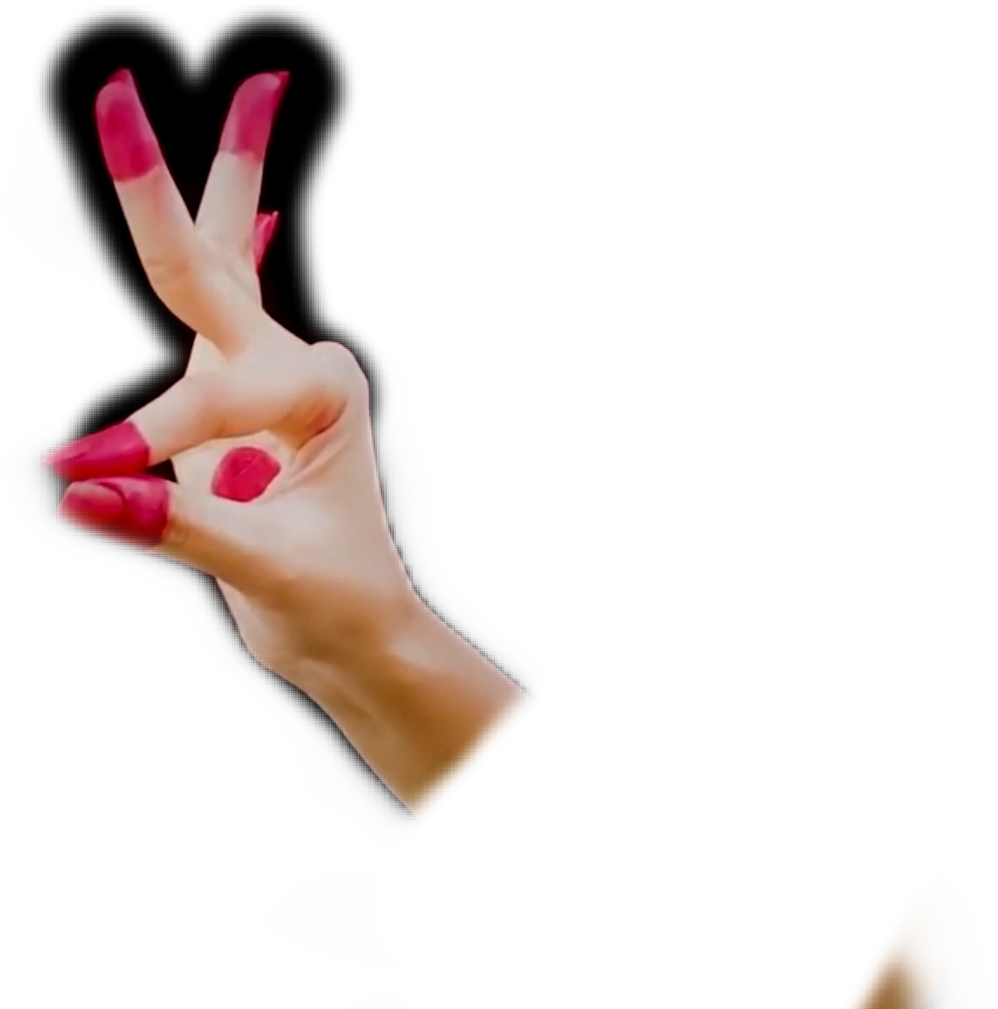
24. Hanspaksha: In Sarpsheesh, when the little finger is stretched and made straight, it is Hanspaksha. It is used to denote the number six, bridge, etc.
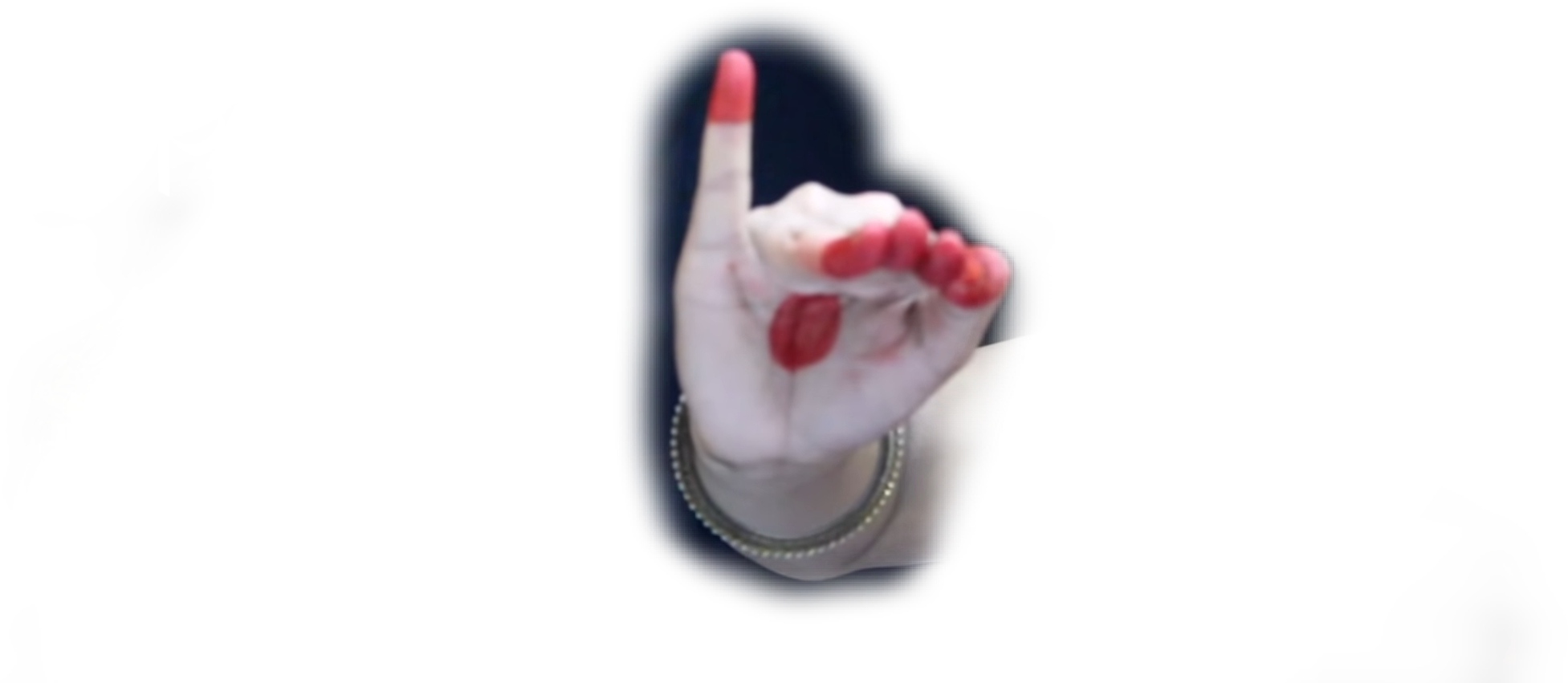
25. Sandansh: In Padmakosh, when the fingers are repeatedly opened and shut, it is Sandansh. It is used to denote sacrifice, wound, great levels of fear, etc.
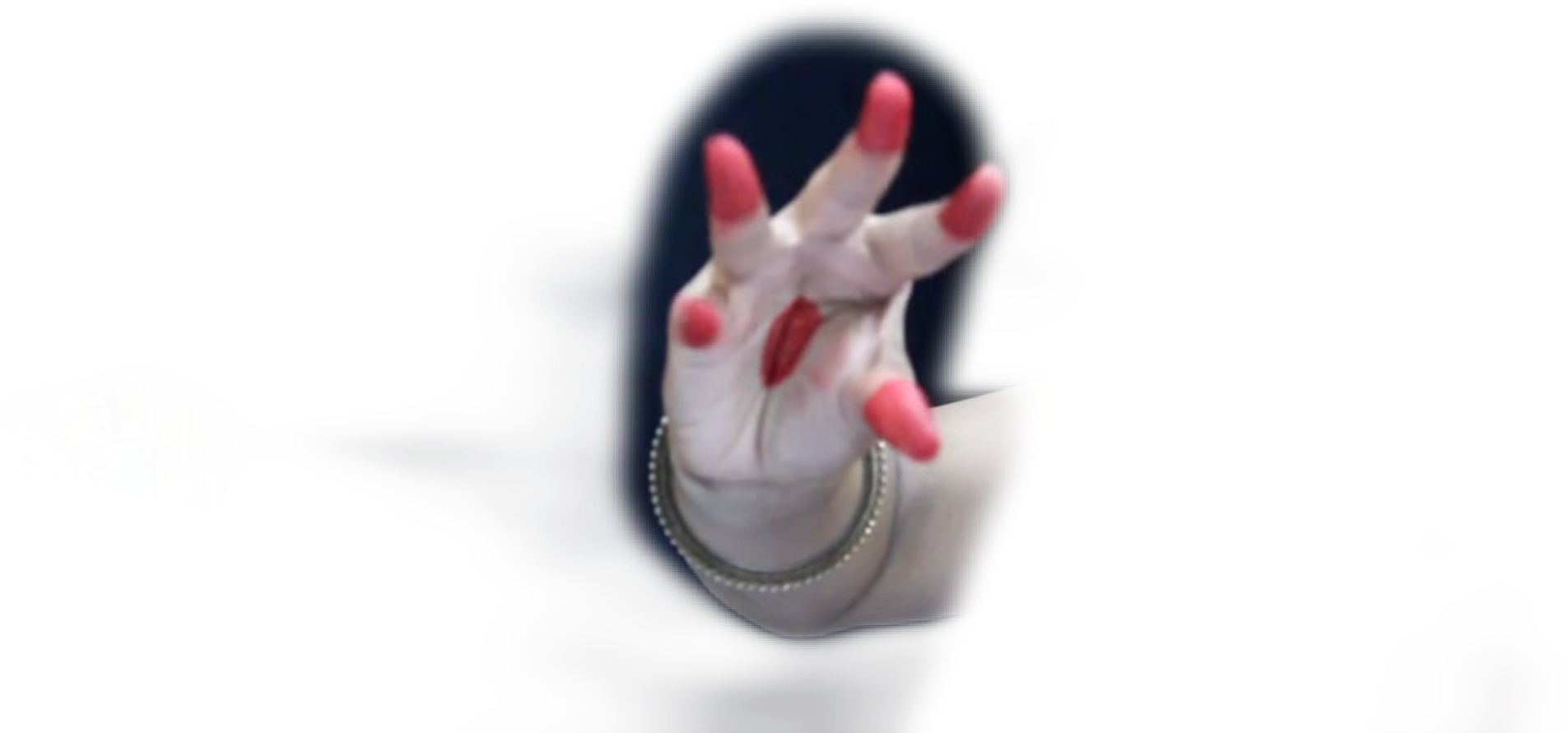
26. Mukul: On joining all the finger tips, Mukul hasta mudra is formed. It is used to denote Lotus flower, food, Kamadeva, etc.
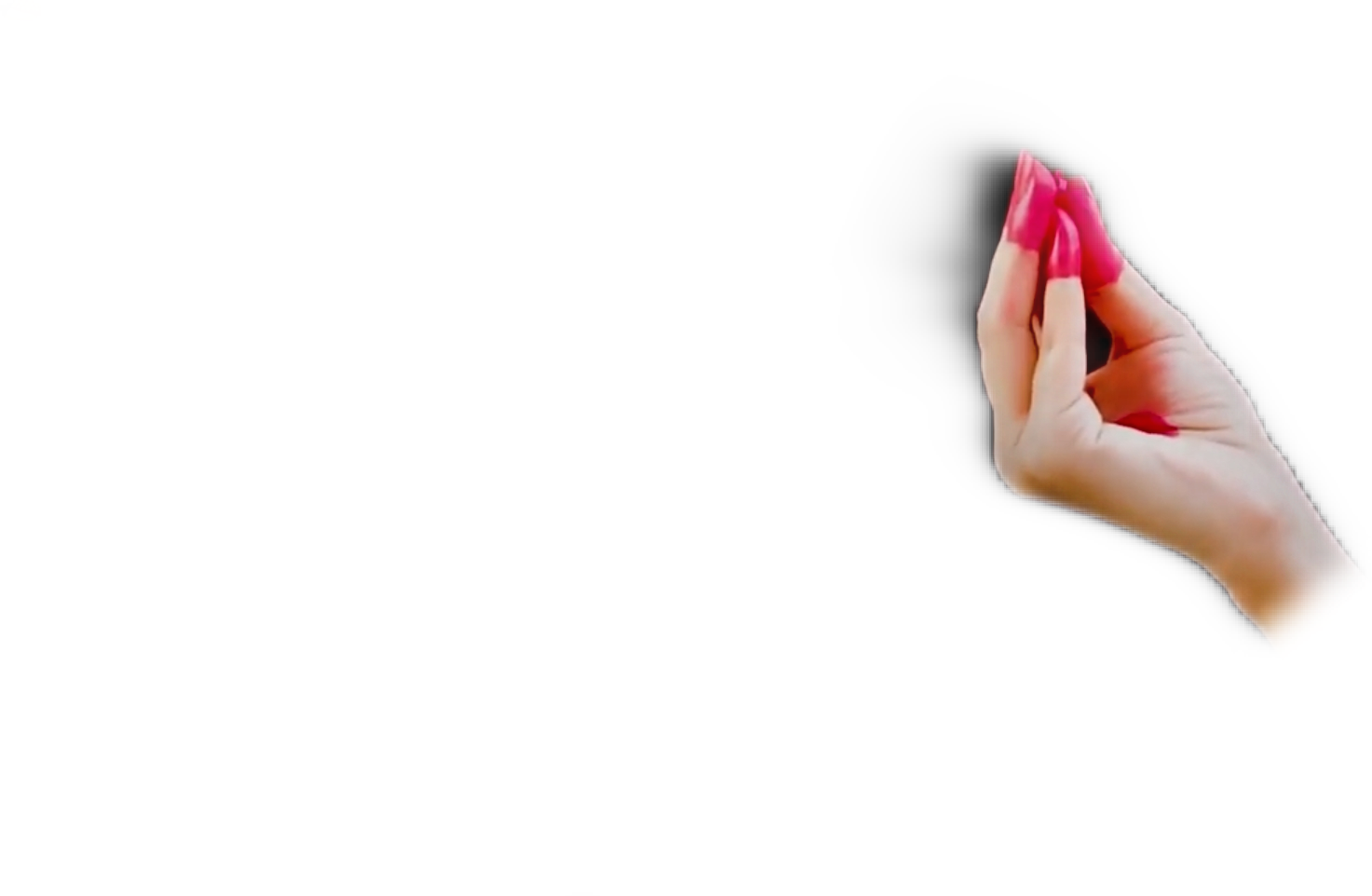
27. Tamrachud: In Mukul, by raising the index finger whilst keeping it crooked forms the Tamrachud hasta mudra. It is used to denote chicken, camel, writing, etc.
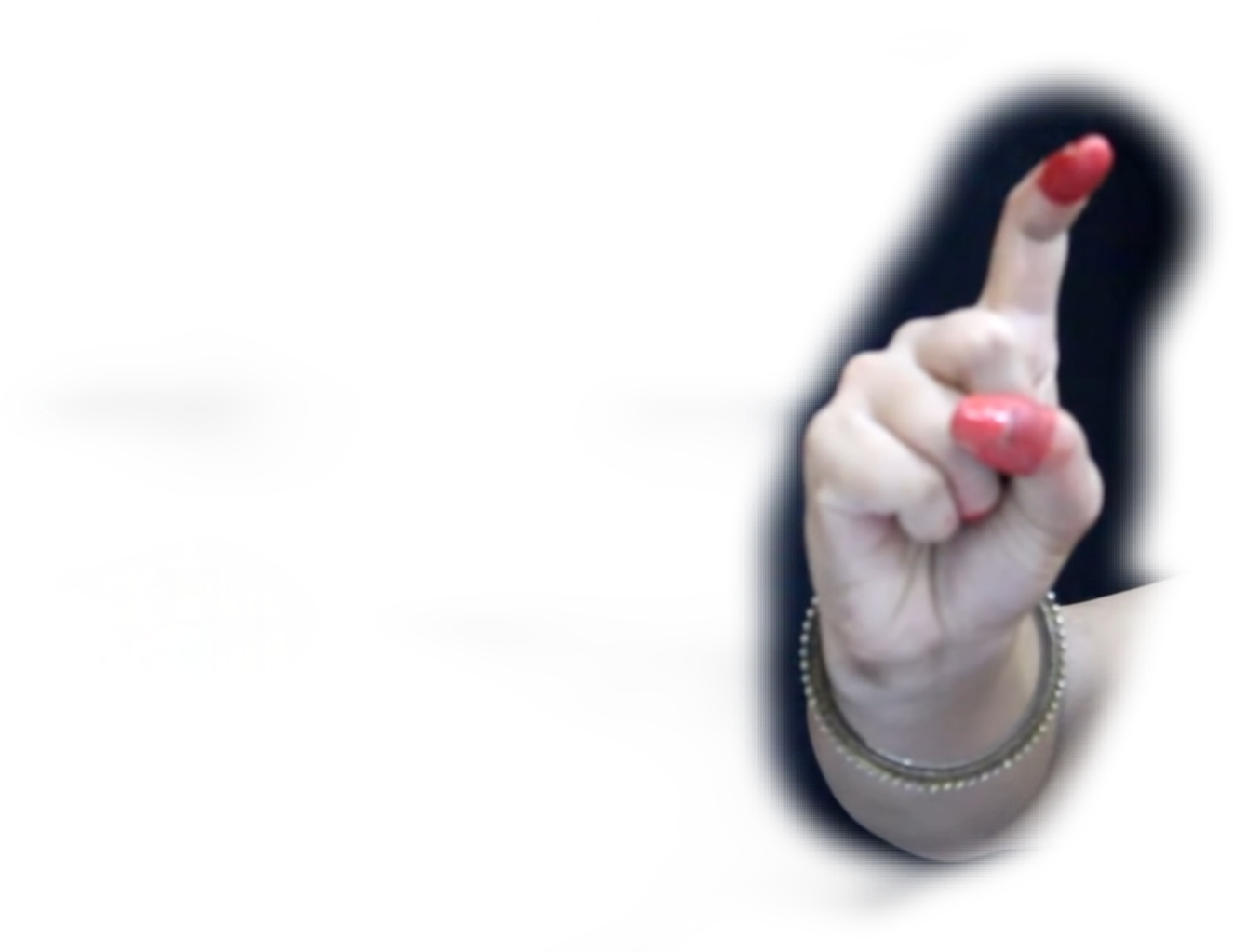
28. Trishool: By joining the tips of the little finger and the thumb, whilst spreading the other three fingers results in Trishool mudra. It is used to denote three-aspects, trident (trishool), etc.
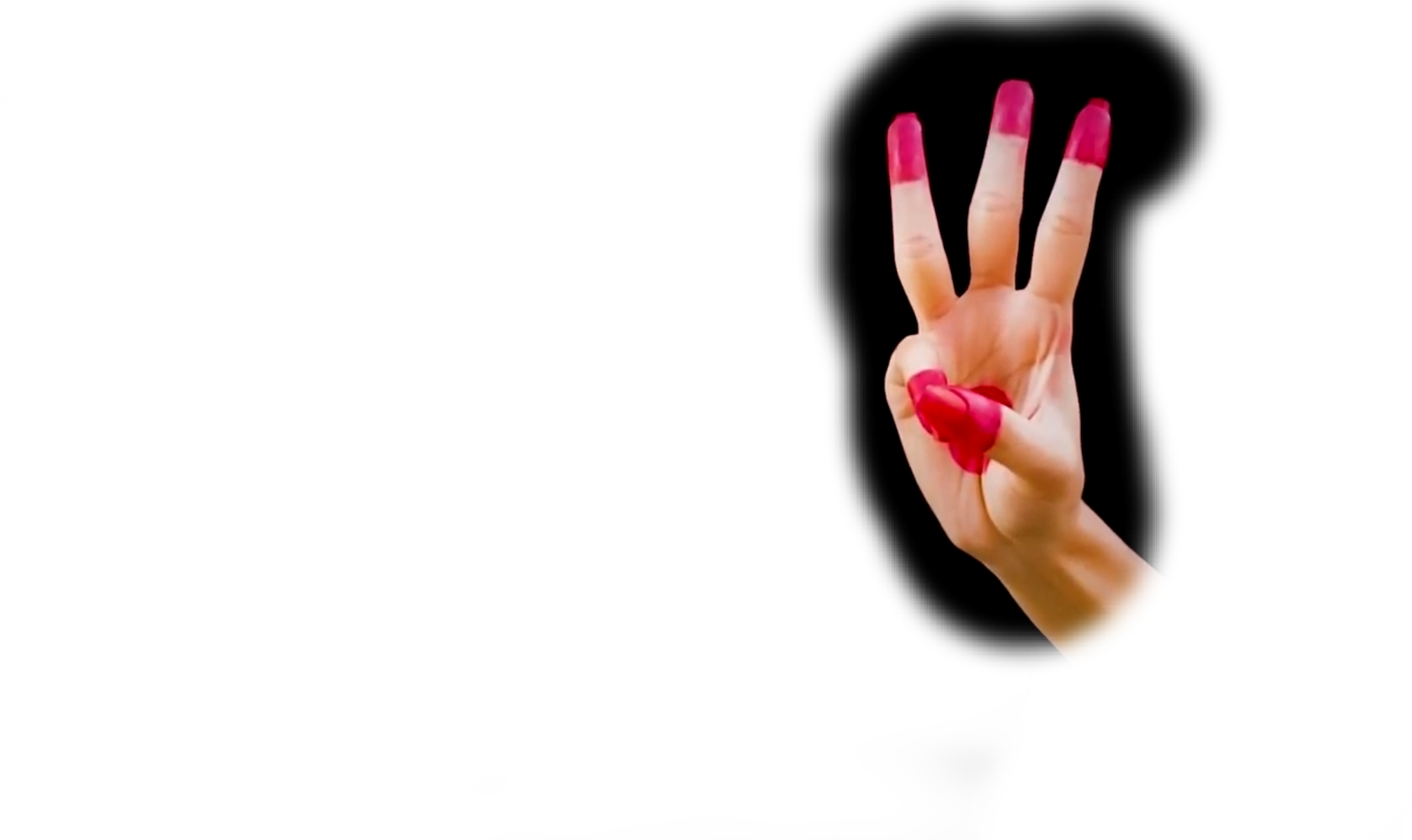
29. Vyaaghra: In the Mrigasheesh mudra, on bending the little finger and the thumb, Vyaaghra is formed. It is used to denote frog, monkey, etc.
30. Ardhsoochi: In the Kapitth hasta, on raising the index finger, is Ardhsoochi. It is used to denote seed, bird, etc.
31. Katak: In Sandansh mudra, if the middle and ring finger are stretched straight, it is Katak mudra. It is used to denote “calling” someone, looking, walking, etc.
32. Palli: In Mayur hasta, when the index finger is placed behind the middle finger, it is known as Palli. It is used to denote a village or slum.
Samyukta Hasta Mudra(Joint Hand Gestures)
1. Anjali: By forming Pataka mudra with both hands and joining them with the palms facing each other is Anjali mudra. It is used to denote worship to God, Guru, Brahma, etc. It is first placed on the forehead, followed by face, and chest - in this order.
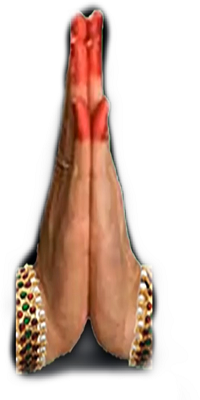
2. Kapoth: In Anjali mudra, on bending the fingers slightly whilst keeping the adjoined is Kapoth mudra. It is used to denote politeness towards our Gurus and elders.
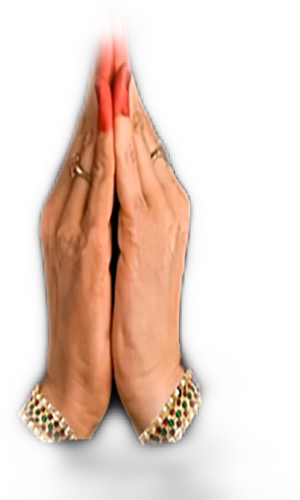
3. Karkata: When the fingers of both hands are first stretched, then joined and overlapped on top of another, it is known as Karkata. It is used to denote the branches of trees, a group, summoning of people, etc.
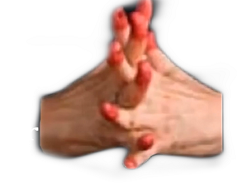
4. Swastika: On forming Pataka mudra with both hands and placing them in a crossed manner by the wrists is Swastika mudra. It is used to denote the feeling of “however/but”.
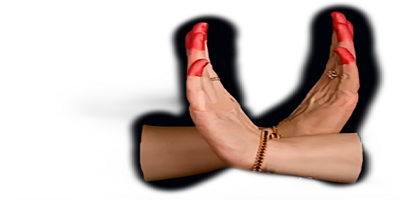
5. Dola: When the Pataka mudra is placed on the hips, it is known as Dola mudra. It is used in the beginning of any drama.
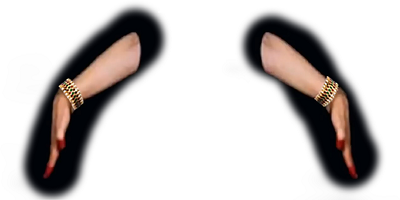
6. Pushpaputa: When Sarpsheesh mudra is made with both hands while joining them from the region of the little finger, it is known as Pushpaputa. It is used to denote “aarti”, taking water, offering (pushpanjali) etc.
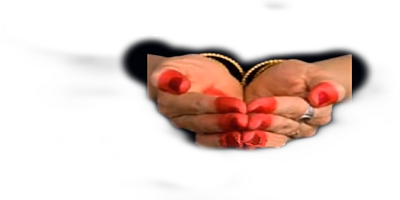
7. Utsang: By placing the right hand on the left shoulder, and placing the left hand on the right shoulder, in a Mrigasheesh mudra, with arms overlapping frontwards is known as Utsang. It is used to denote togetherness, shyness, or to teach students, etc.
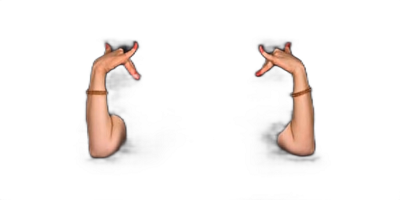
8. Shivalinga: By forming the Shikhar hasta with the right hand and placing it on the palm of the left hand which is in an Ardhchandra mudra is Shivalinga mudra. It is used to denote the Shivalinga.
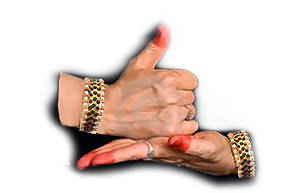
9. Katakavardhana: By forming the Katkamuka mudra with both hands and overlapping them whilst keeping the wrists joined is Katakavardhana mudra. It is used to denote Pattabhishek pooja, wedding, etc.
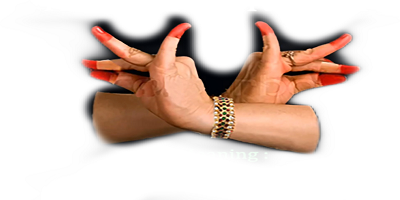
10. Kartariswastika: On forming the Kartarimukha mudra with both hands and crossing them in a Swastika mudra is Kartariswastika. It is used to denote peak, branch, part, etc.
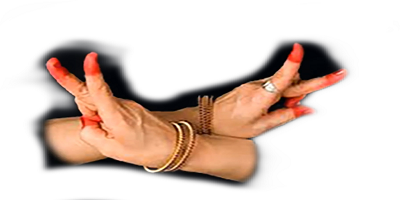
11. Shakata: By making the Bharamara mudra with both hands and separating the middle fingers from the thumbs is Shakata. It is used to denote demons.
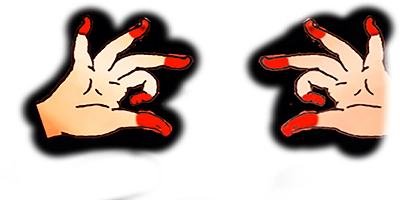
12. Shankha: On placing the right thumb on the palm of the left hand, followed by the fingers of the left hand wrapping the thumb, leading to the fingers of the right hand being placed on the knuckles of the left hand and joining the right thumb with the fingers is the Shankha mudra. It is used to denote a shell (shankha).
.png)
13. Chakra: By forming Ardhchandra mudras and placing one on top of another with palms facing towards each other in a Swastika form. It is used to denote a wheel or the sun.
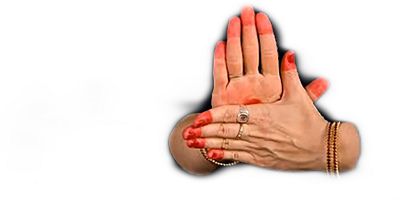
14. Samputa: In Chakra hasta, when the fingers are bent fully in a way that each hand holds the other hands’ palm, is known as Samputa hasta. It is used when we do tatkaar, or to hide something, etc.
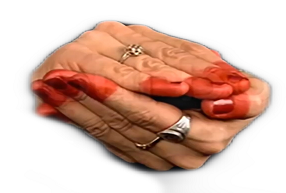
15. Paash: By making the Soochi mudra and holding the index fingers together in a slightly bent manner is Paash mudra. It is used to denote enmity, fight, etc.
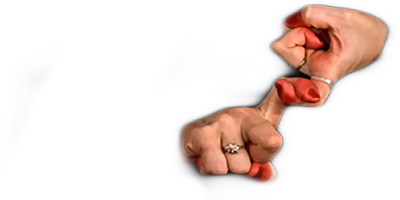
16. Keelak: On forming Mrigasheesh mudra with both hands and joining both the little fingers together whilst keeping them slightly bent is Keelak. It is used to denote love, affection, etc.
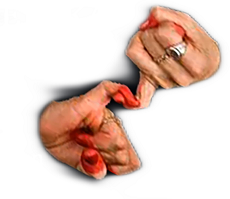
17. Matsya: On placing the palm of one hand on the back-side of the other hand while spreading the thumbs and little fingers slightly is known as Matsya. It is used to denote a fish.
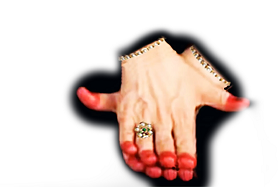
18. Koorm: In Samputa hasta, when the little finger and index finger are opened and spread, it is known as Koorm hasta. It is used to denote a tortoise.
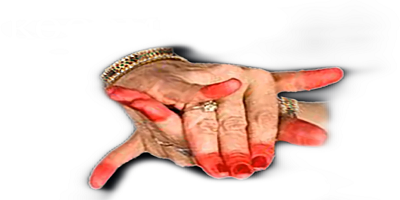
19. Varaah: By making Mrigasheesh mudras and placing the palm of one hand on the back-side of the other hand and spreading the little finger and thumb, results in Varaah. It is used to denote a pig.
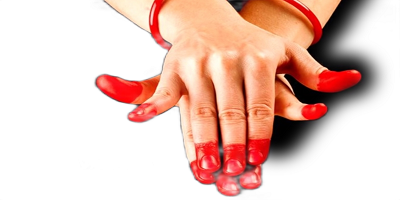
20. Garud: On making Ardhachandra mudras and placing them in a Swastika form in a way that the thumbs overlap and wrists touch, is Garud. It is used to denote an eagle or flying bird.

21. Nagabandha: By making Sarpsheesh mudra and placing them in Swastika form is known as Nagabandha. It is used to denote Nagabandha.
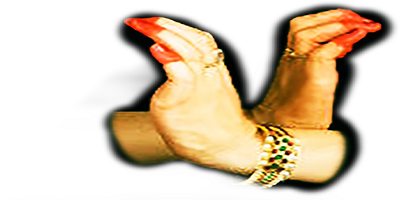
22. Khatwa: By making Chatur mudra and placing them on top of another whilst separating the index finger and thumb is Khatwa mudra. It is used to denote Palki bhav, etc.
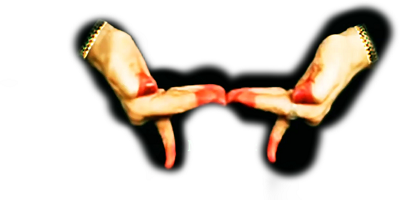
23. Bherunda: By forming Kapitth hasta with both hands and placing them together from the wrist is Bherunda hasta. It is used to denote love, or two birds together, etc.
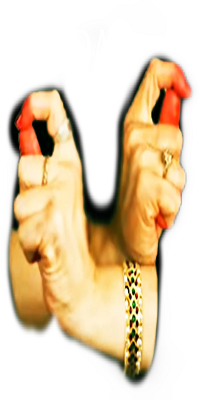
Students must imbibe knowledge of these mudras from their Gurus. These mudras are that language of dance which enables the dancer to truly express their ideas and thoughts in a clear, artistic, and aesthetic manner. These hand gestures truly are the alphabet of Indian Classical dance without which expression has no value.
Nritta Hasta(Hand Gestures sed in Technical Dance)
In Natyashastra, there are 30 types of Nritta hasta, whereas in the Abhinaya Darpana, there are only 13 types. The nritta mudras in Natyashastra are an amalgamation of samyukta and asamyukta hastas mentioned. Because these are used to enhance dance, they don’t have much meaning. Acharya Nandikeshwar has also spoken of the qualities. However, there’s no mention of its usage. Bharatamuni has explained nritta hasta with reference to Karan formation. Along with this, in Abhinaya (explaining meaning), it has been said to use these with reference to its symbolism.
Here, we will discuss the nritta hasta with reference to Natyashastra:
1. Chaturasra: With 8 fingers from the chest (from inside), in front of both the hands in the Katakamukh mudra, and keeping both the shoulders and elbows at the same height is known as Chaturastra.
2. Udvridha: Moving the two hands in Hamsapaksha mudra like a fan, its other name is "Talvatrak".
3. Talmukha: In Chaturasra, keeping the Hanspaksha mudra in a slightly tilted form whilst facing each other is known as Talmukha.
4. Swastik: Making the Talmukha hasta in a Swastika form is Swastik.
5. Viprakeen Swastik: Removing gestures after a dance presentation is known as Viprakeen Swastik.
6. Aralkatkamukha: Keeping Alpadma hasta upwards whilst changing it to Padmakosha is Aralkaktamukha mudra.
7. Aaviddhvakra: Touching the shoulders and elbows of the opposite arm in an oblique motion with both hands flexing the palms of both aral mudras in an up and down motion is known as Aaviddhvakra.
8. Soochimukh: When two Sarpsheesh mudras touch the middle fingers and thumbs whilst being in a slanted form is known as Soochimukh.
9. Rechita: Rechita hasta is formed when two Hanspaksha mudras are rapidly twisted whilst extending the palm upwards.
10. Ardhrechita: Making the Chturastra mudra with the left hand and making the Rechita hasta with the right is known as Ardhrechita.
11. Utaanvanchit: Placing two Tripataka mudras somewhat diagonally and tilting and moving the shoulders and elbows.
12. Pallav: Joining two Pataka mudras from the wrist is known as Pallav.
13. Nitambh: Using Pataka mudras, moving the hands from the shoulders upwards is known as Nitambh.
14. Koshbandh: Keep both hands upright with both arms by moving from the hairline or crest is known as Koshbandh.
15. Lata: To spread both hands diagonally and then spread it on both sides is known as Lata.
16. Karihasta: In continuation to Lata hasta, taking the hands upwards and making one hand swing with the other, along with keeping one hand next to the face in a Tripataak mudra is known as Karihasta.
17. Pakshvanchitak: Keeping one Tripataak mudra on the waist and keeping the other on the same level as the head is known as Pakshvanchitak.
18. Pakshpradyutak: This is made by flipping the Pakshvanchitak mudras.
Kathak is the most mesmerizing dance form woven around the concept of storytelling.
Click here to know more about the different concepts related to charming dance mudras, and footwork such as Nayak and Nayika & Pandit Birju Maharaj.